Creating the perfect pond edging transforms your water feature from a simple excavation into a stunning landscape focal point. The right edging approach not only conceals unsightly pond liners but also integrates your pond seamlessly into the surrounding garden design. Modern pond edging encompasses everything from natural stone arrangements to contemporary metal frameworks, each offering distinct aesthetic and functional benefits. Whether you're designing a wildlife haven, a formal water garden, or a contemporary outdoor space, selecting the appropriate edging style enhances both visual appeal and practical pond maintenance while creating smooth transitions between water and landscape.
1. Natural Stone Boulder Pond Edging

Transform your pond into a natural oasis with carefully arranged stone boulders of varying sizes and textures. This pond edging approach uses large granite, limestone, or sandstone rocks to create an organic shoreline that mimics natural lakes and streams. Position larger boulders as anchor points, then fill spaces with medium and smaller stones to create visual depth and wildlife access points. The irregular shapes and natural color variations provide timeless appeal while offering practical benefits like hiding pond equipment and creating shallow areas for birds and beneficial insects. This edging style works exceptionally well with curved pond shapes and complements both formal and informal garden designs, requiring minimal maintenance while providing years of enduring beauty.
2. Wooden Decking Pond Edging
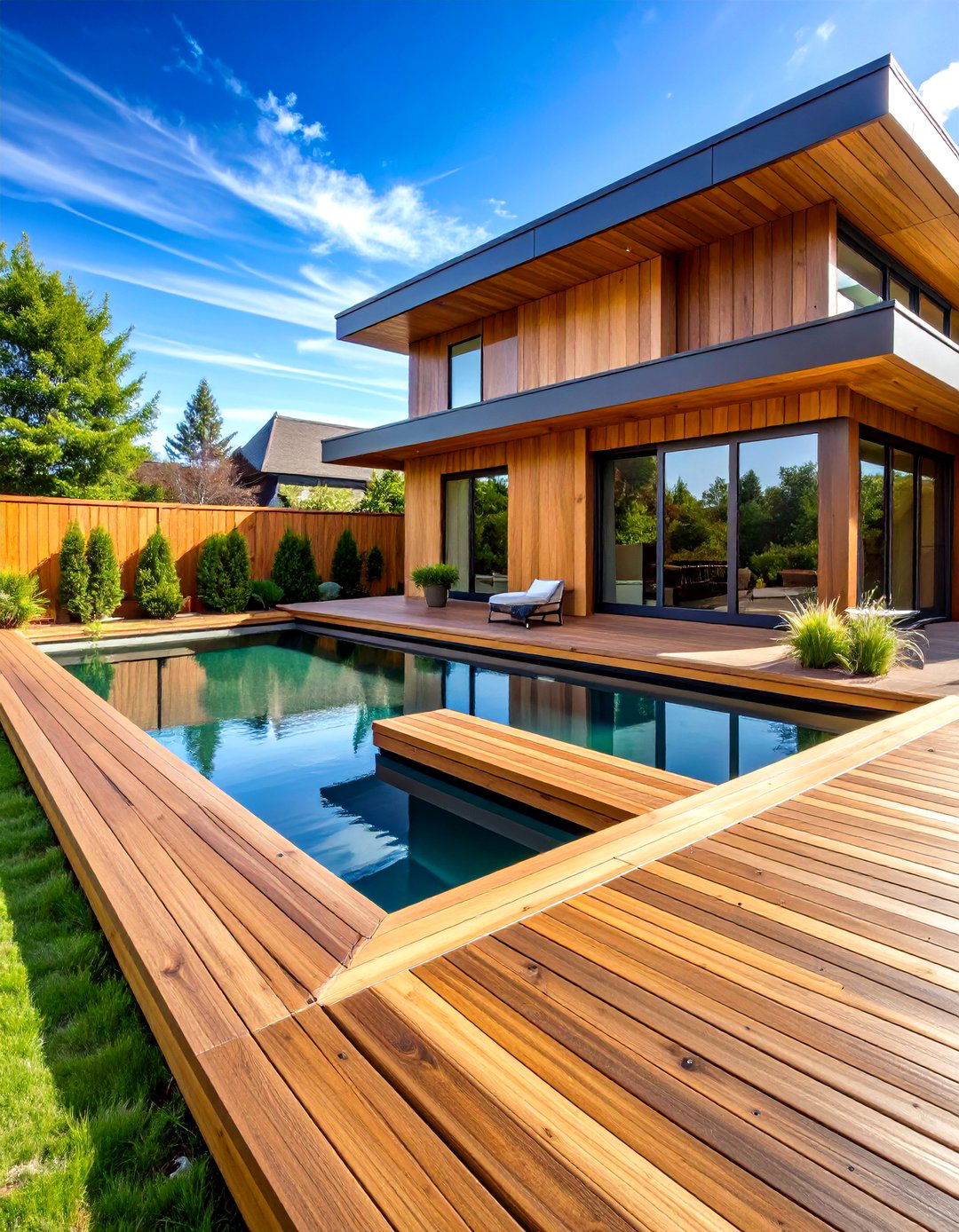
Extend your living space directly to the water's edge with custom wooden decking that creates both functional seating and elegant pond edging. This pond edging design uses weather-resistant timber like cedar, teak, or composite materials to construct platforms that partially overhang the water surface. The decking serves multiple purposes: concealing pond equipment, providing comfortable viewing areas, and creating clean architectural lines that suit contemporary garden styles. Install proper footings beneath the pond liner to support the deck structure, ensuring stability and longevity. This approach works particularly well for rectangular or geometric pond shapes, offering opportunities to incorporate built-in seating, planters, or lighting features that enhance evening pond enjoyment and create sophisticated outdoor entertaining spaces.
3. Pebble Beach Pond Edging
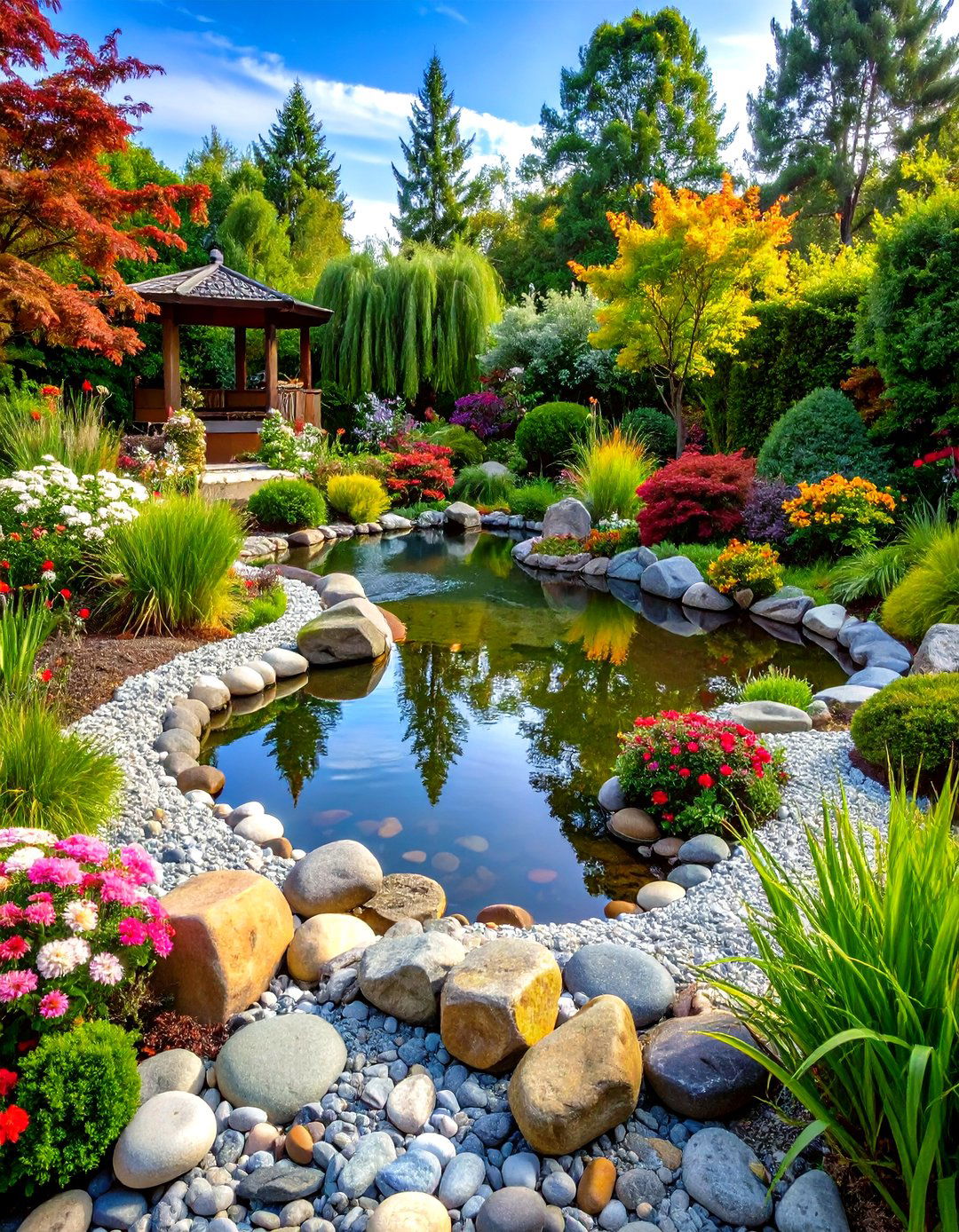
Create a gentle, naturalistic transition with smooth pebbles arranged in graduated sizes to form an authentic beach-like shoreline. This pond edging technique uses river rocks, beach stones, and smooth pebbles ranging from small gravel to palm-sized stones, arranged in a natural slope that extends both into the water and onto the surrounding landscape. The varied sizes create visual texture while providing easy access for wildlife and simple maintenance for pond owners. Smaller pebbles near the water's edge gradually transition to larger stones, then blend into the broader landscape design. This approach offers excellent drainage, prevents soil erosion, and creates a tactile element that invites interaction while maintaining the pond's natural aesthetic appeal.
4. Concrete Slab Pond Edging
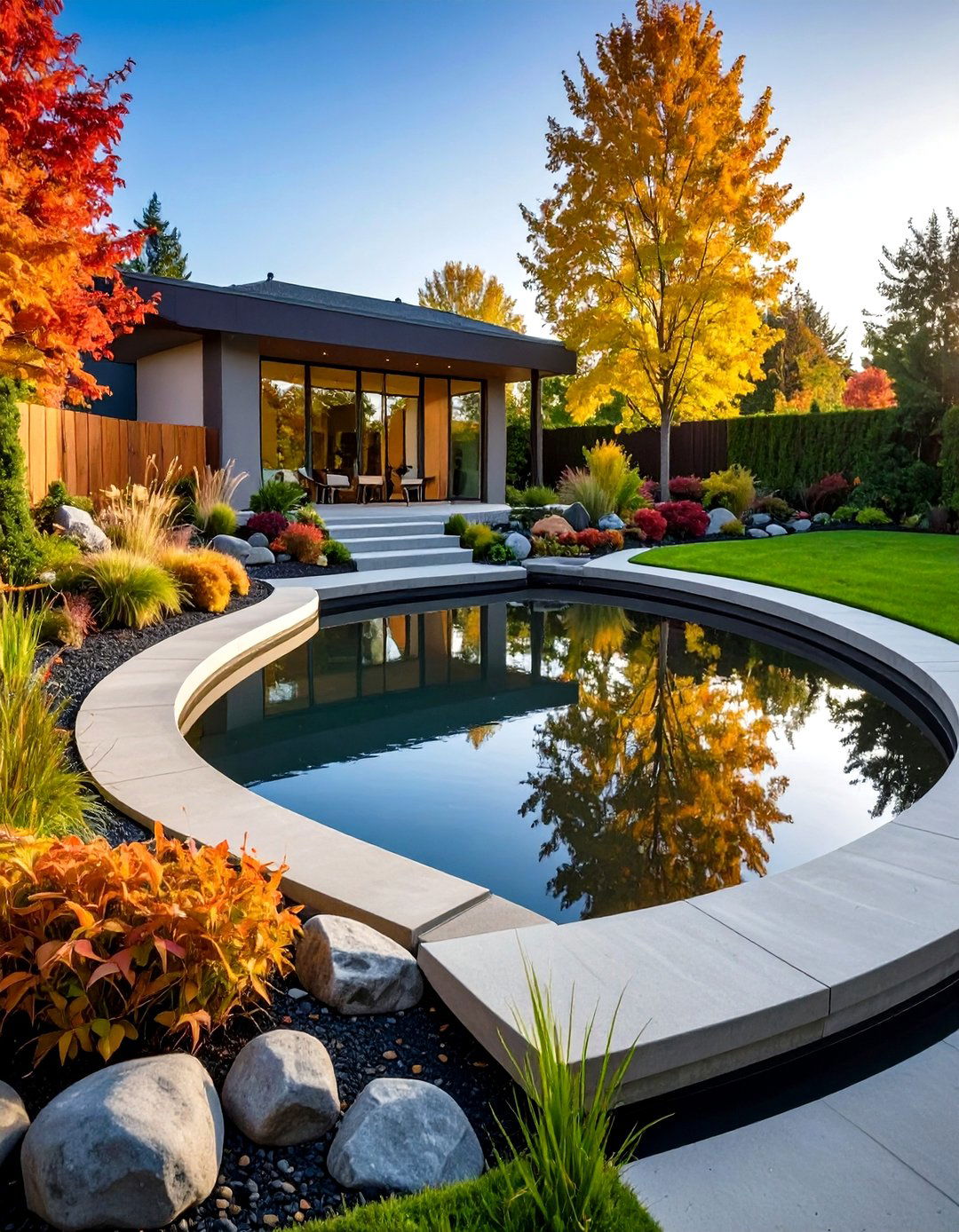
Achieve a clean, modernist aesthetic with precisely cut concrete slabs that create sharp, geometric pond edging suitable for contemporary garden designs. This pond edging style uses precast or poured concrete pieces arranged in regular patterns to form a sophisticated perimeter that emphasizes the pond's architectural qualities. The smooth, uniform surface provides excellent durability and requires minimal maintenance while offering opportunities for creative finishes like stamped textures, colored concrete, or exposed aggregate surfaces. This approach works particularly well with rectangular or square pond shapes, creating strong visual lines that complement modern architecture and minimalist landscaping. The concrete can extend beyond the pond edge to create integrated seating areas or pathways that unify the entire water feature with surrounding hardscape elements.
5. Brick Wall Pond Edging
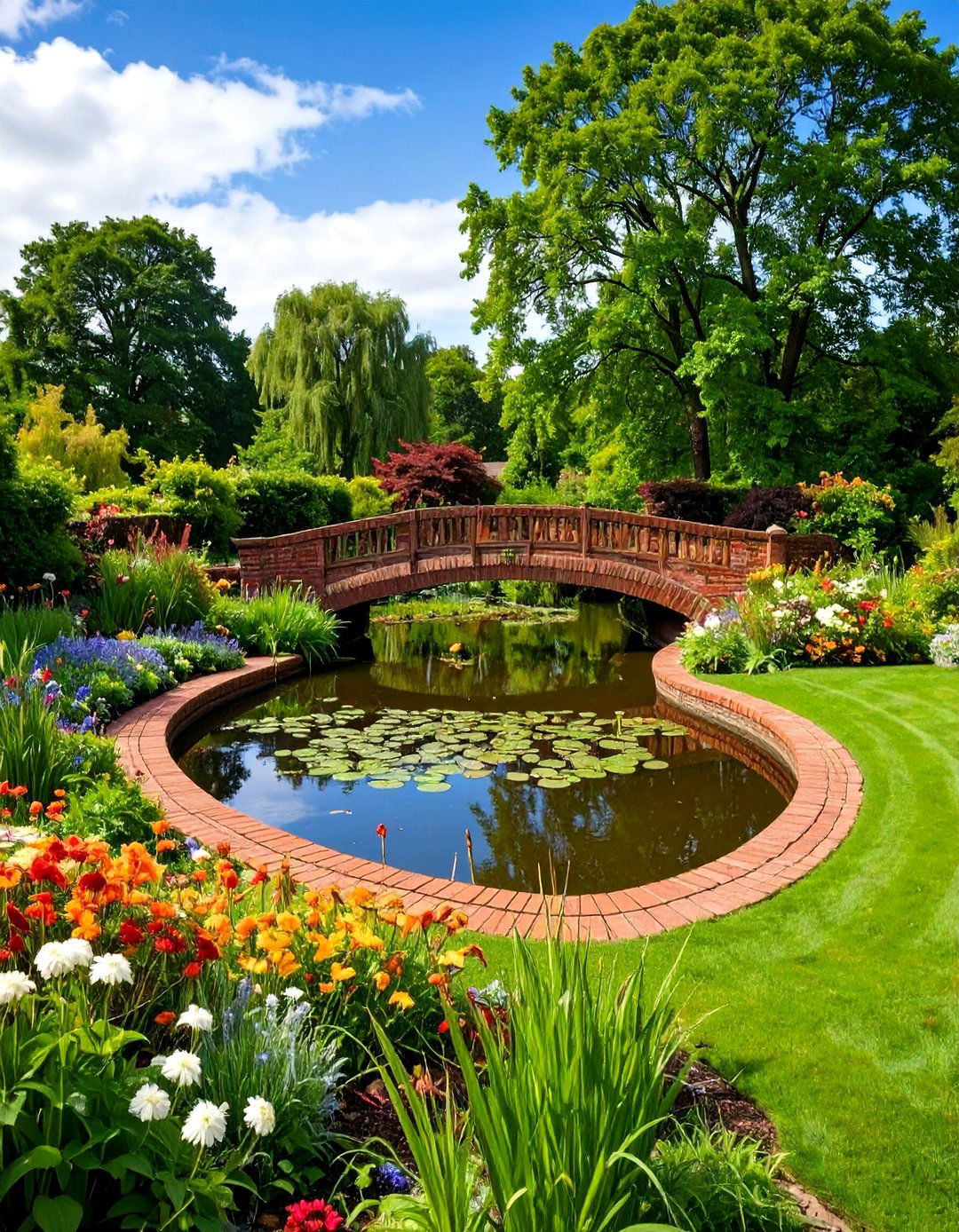
Construct a charming, traditional pond edging using classic brick construction that creates raised walls providing both structural support and visual appeal. This pond edging approach uses standard or specialty bricks arranged in various patterns like running bond, herringbone, or soldier courses to create formal yet welcoming boundaries. The warm, earthy tones of brick complement most garden styles while providing practical benefits like additional seating height and protection for pond equipment. This method works well for both raised and ground-level ponds, offering opportunities to incorporate built-in planters, water features, or decorative elements. The brick construction requires proper footings and mortar work but rewards with decades of maintenance-free beauty and the flexibility to adapt the design with seasonal plants or decorative accessories.
6. Gravel Border Pond Edging
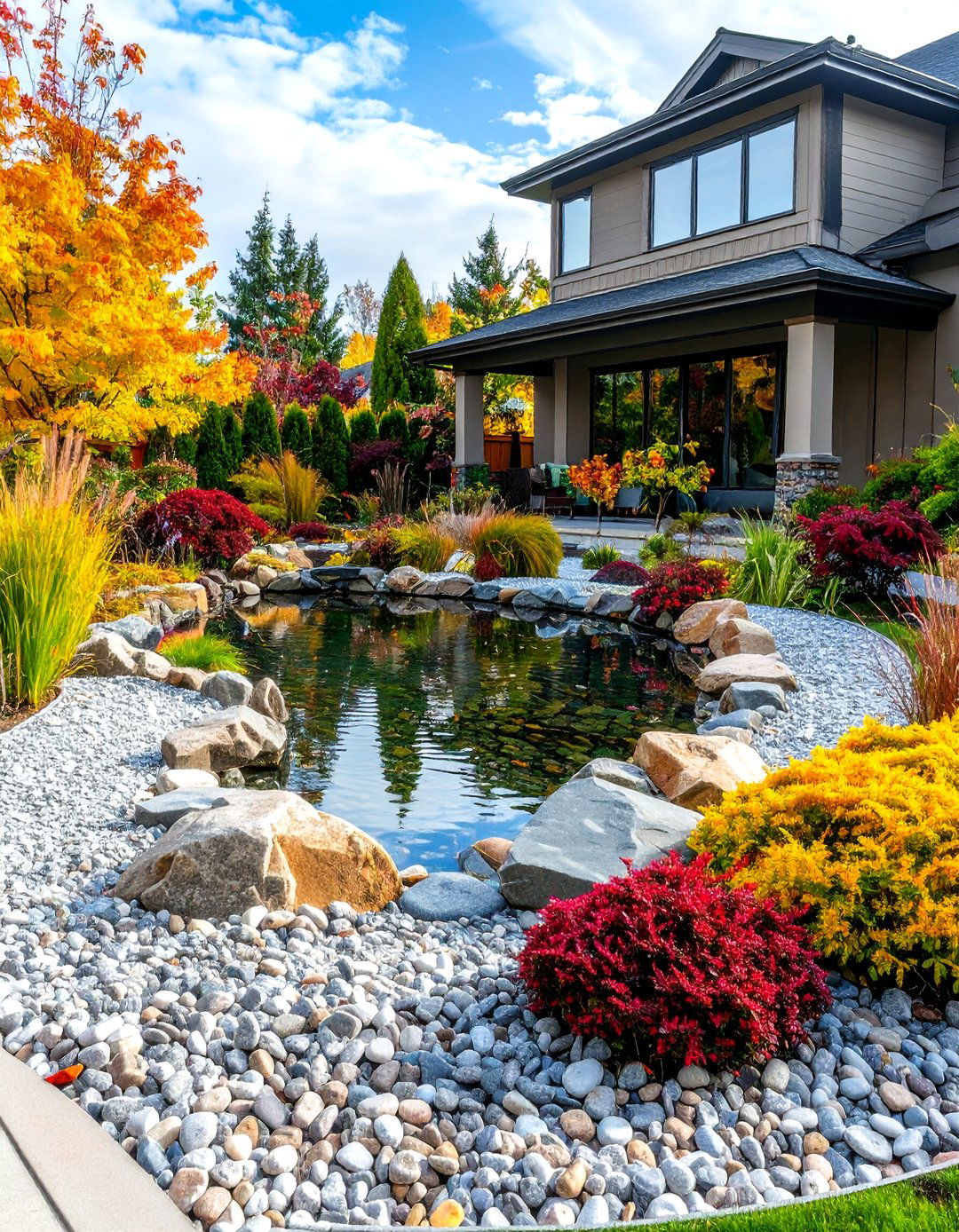
Establish a simple yet effective pond edging using carefully selected gravel that creates clean definition while maintaining natural aesthetics. This pond edging technique involves cutting an angled trench around the pond perimeter and filling it with uniform gravel or decorative stones in colors that complement the surrounding landscape. The gravel provides excellent drainage, prevents grass encroachment, and creates a maintenance-friendly buffer zone around the water feature. Choose from various gravel types like crushed granite, river rock, or colored stone to match your garden's color palette. This approach works well with any pond shape and offers easy seasonal updates or modifications. The gravel border can be edged with metal or stone strips for extra definition and helps prevent the stones from migrating into surrounding planted areas.
7. Planted Marginal Pond Edging

Create a living pond edging using carefully selected marginal plants that thrive in wet conditions while providing natural beauty and wildlife habitat. This pond edging approach uses bog plants, ornamental grasses, and moisture-loving perennials arranged in naturalistic groupings that soften the pond's boundaries and create seamless transitions to the broader garden. Plant selections might include iris, cattails, pickerel rush, and cardinal flower, chosen for their varying heights, textures, and seasonal interest. The planted edging provides excellent erosion control, natural water filtration, and habitat for beneficial insects and amphibians. This approach requires more maintenance than hardscape options but rewards with dynamic seasonal changes and the satisfaction of creating authentic ecosystem connections. Design the planting in drifts and layers to create natural-looking communities that support pond health and visual appeal.
8. Flagstone Stacked Pond Edging
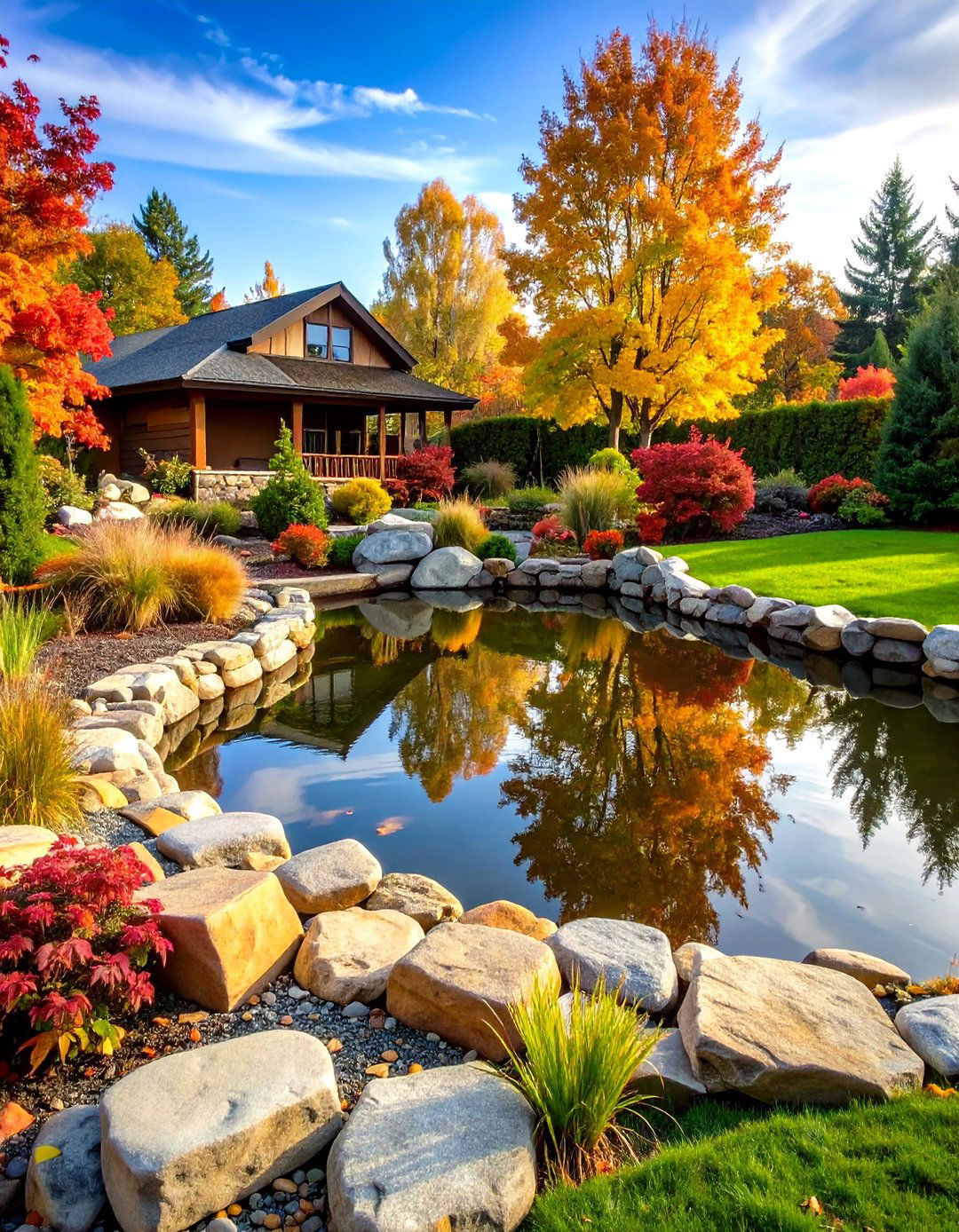
Craft an elegant pond edging using flat flagstone pieces stacked and arranged to create sophisticated natural walls that define the water feature's perimeter. This pond edging style uses naturally occurring flat stones like sandstone, slate, or limestone arranged in irregular patterns that emphasize the stone's natural textures and colors. The stacked arrangement creates visual interest through varied heights and angles while providing practical benefits like hiding pond equipment and creating different viewing perspectives. This approach works well with both formal and informal pond designs, offering opportunities to incorporate built-in seating areas or decorative niches. The flagstone's natural slip-resistance makes it safe for walking, while its durability ensures long-lasting beauty with minimal maintenance requirements. The irregular stacking pattern creates a handcrafted appearance that complements both traditional and contemporary garden styles.
9. Metal Frame Pond Edging
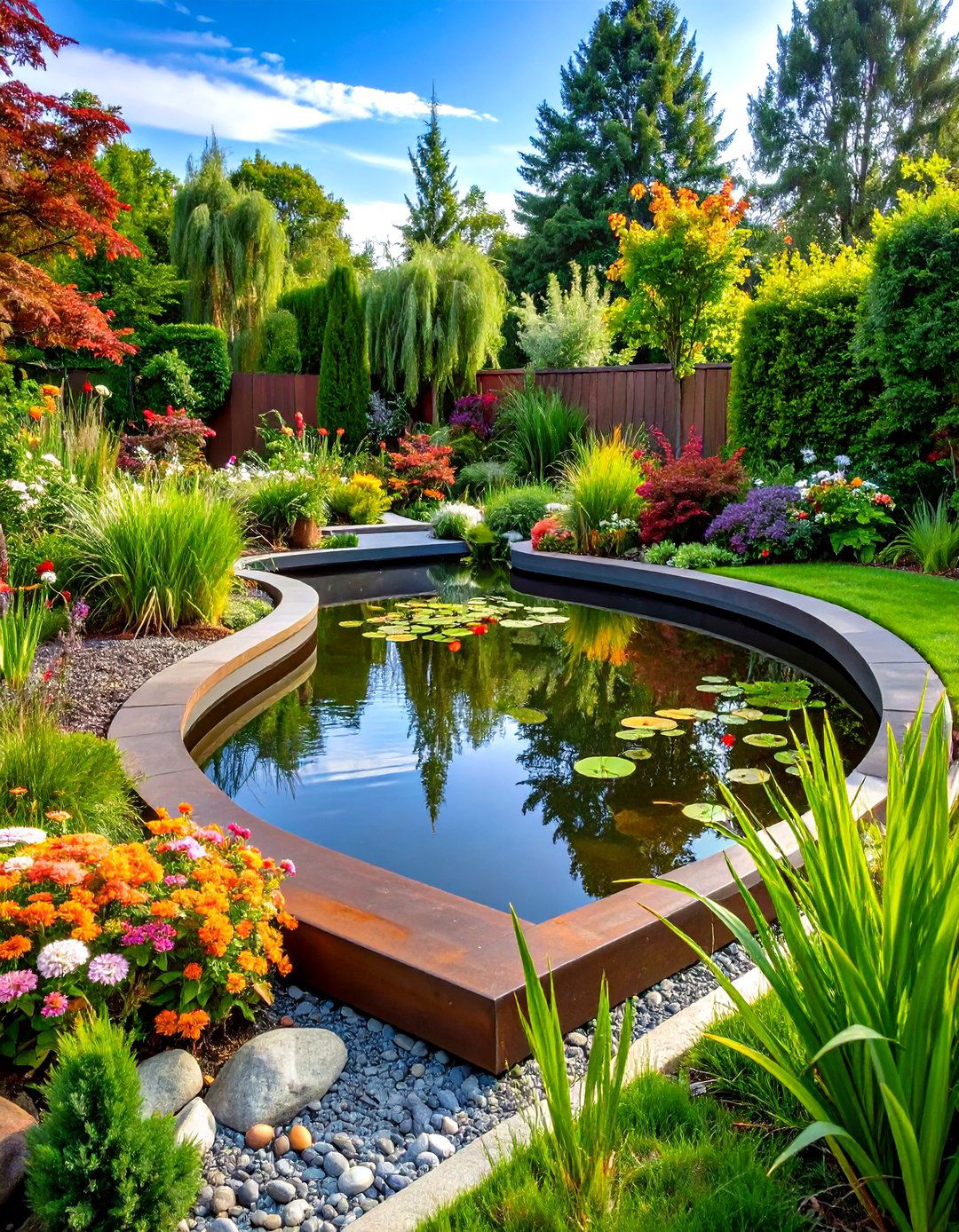
Design a contemporary pond edging using sleek metal frameworks that create clean, architectural lines suitable for modern garden designs. This pond edging approach uses materials like corten steel, aluminum, or stainless steel formed into continuous borders that emphasize geometric shapes and minimize visual clutter. The metal framework can incorporate built-in lighting, create raised planters, or provide mounting points for water features while maintaining the pond's modern aesthetic. This approach works particularly well with rectangular or circular pond shapes, creating strong visual statements that complement contemporary architecture and minimalist landscaping. The metal develops attractive patina over time or can be maintained in original finishes depending on design preferences. This edging style offers excellent durability, requires minimal maintenance, and provides opportunities for creative integration with other landscape elements like pergolas or screening walls.
10. Slate Tile Pond Edging
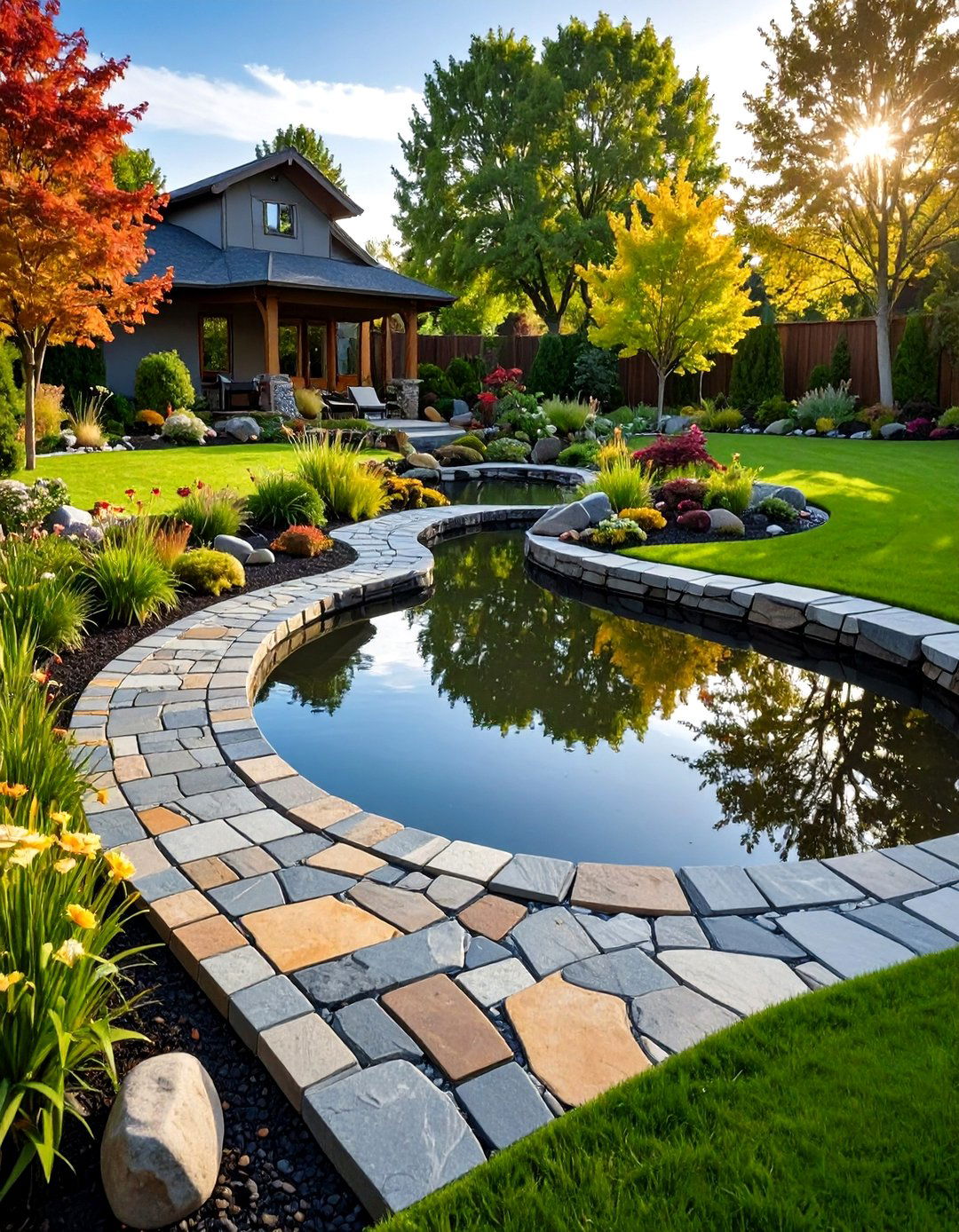
Create a sophisticated pond edging using precisely cut slate tiles arranged in geometric patterns that emphasize the stone's natural beauty and contemporary appeal. This pond edging style uses high-quality slate cut into uniform tiles or irregular shapes, creating smooth, slip-resistant surfaces that provide both safety and visual elegance. The slate's natural color variations and subtle textures complement water features while offering practical benefits like easy cleaning and weather resistance. This approach works well with both formal and informal pond designs, providing opportunities to create integrated pathways, seating areas, or decorative accents. The slate tiles can be arranged in various patterns like running bond, herringbone, or random layouts to create different visual effects. This edging style requires professional installation but rewards with decades of maintenance-free beauty and timeless appeal that enhances property values.
11. Cobblestone Pond Edging
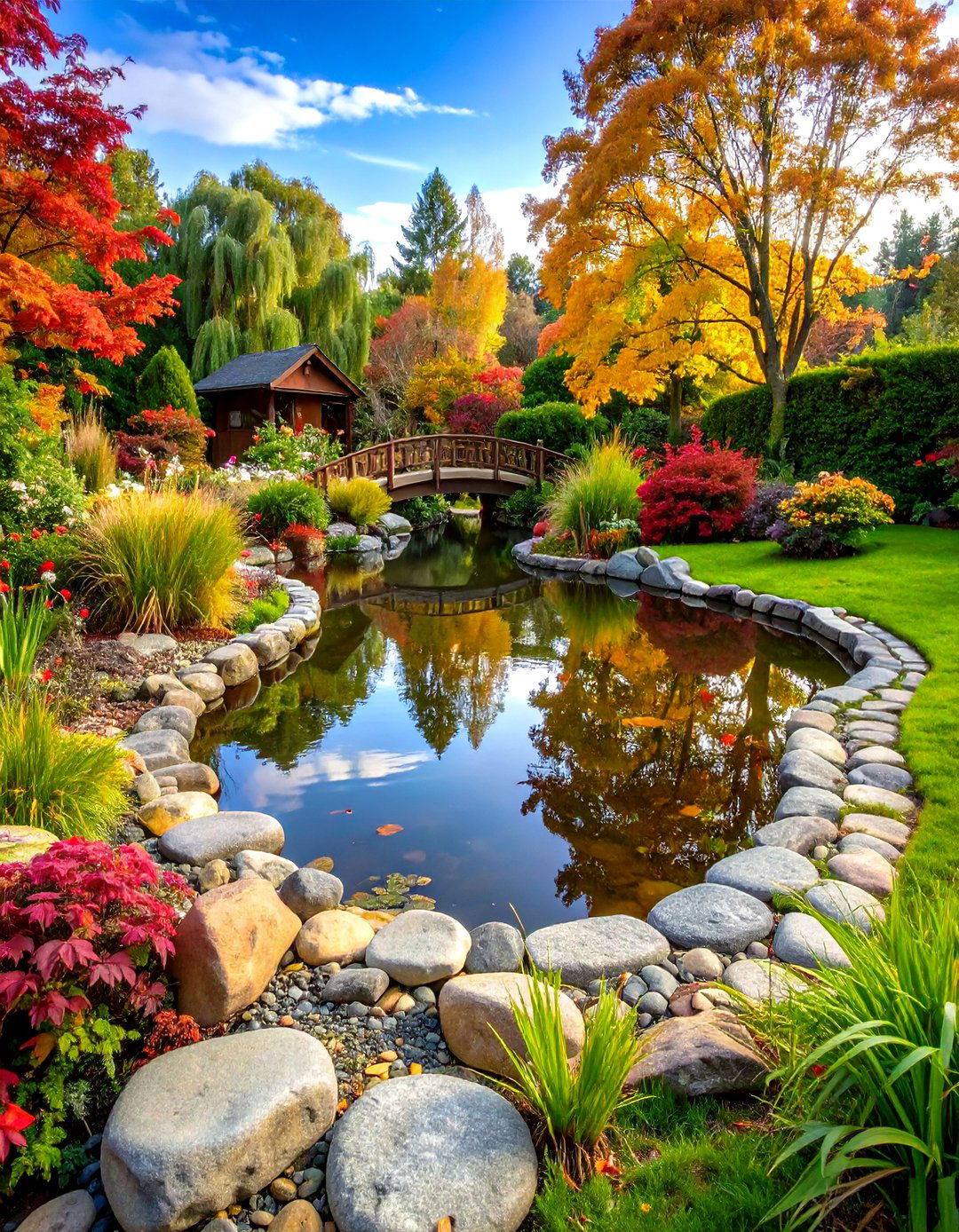
Establish a timeless pond edging using traditional cobblestones that create charming, Old World character while providing excellent durability and slip resistance. This pond edging approach uses naturally rounded stones arranged in traditional patterns that emphasize the cobblestone's irregular shapes and varied colors. The cobblestones can be set in sand, mortar, or gravel to create different visual effects and functional characteristics. This approach works well with cottage gardens, traditional landscapes, or any design seeking historical authenticity. The cobblestone's natural texture provides excellent grip for wet conditions while creating visual interest through light and shadow patterns. This edging style complements curved pond shapes particularly well, following natural contours while providing practical benefits like hiding pond equipment and creating comfortable walking surfaces. The installation requires skilled craftsmanship but results in generations of maintenance-free beauty.
12. Driftwood Log Pond Edging

Design a rustic pond edging using weathered driftwood logs arranged to create natural-looking barriers that emphasize organic textures and coastal aesthetics. This pond edging approach uses naturally weathered wood pieces of various sizes positioned horizontally or vertically around the pond perimeter to create informal, eco-friendly boundaries. The driftwood's silvered surfaces and sculptural shapes provide unique character while offering practical benefits like wildlife habitat and natural erosion control. This approach works particularly well with informal pond designs, wildlife gardens, or coastal-themed landscapes. The logs can be partially buried, stacked, or arranged in natural groupings to create different visual effects. This edging style requires periodic replacement as the wood naturally weathers but provides immediate character and environmental benefits that support sustainable gardening practices while creating distinctive landscape features.
13. Seashell Coastal Pond Edging
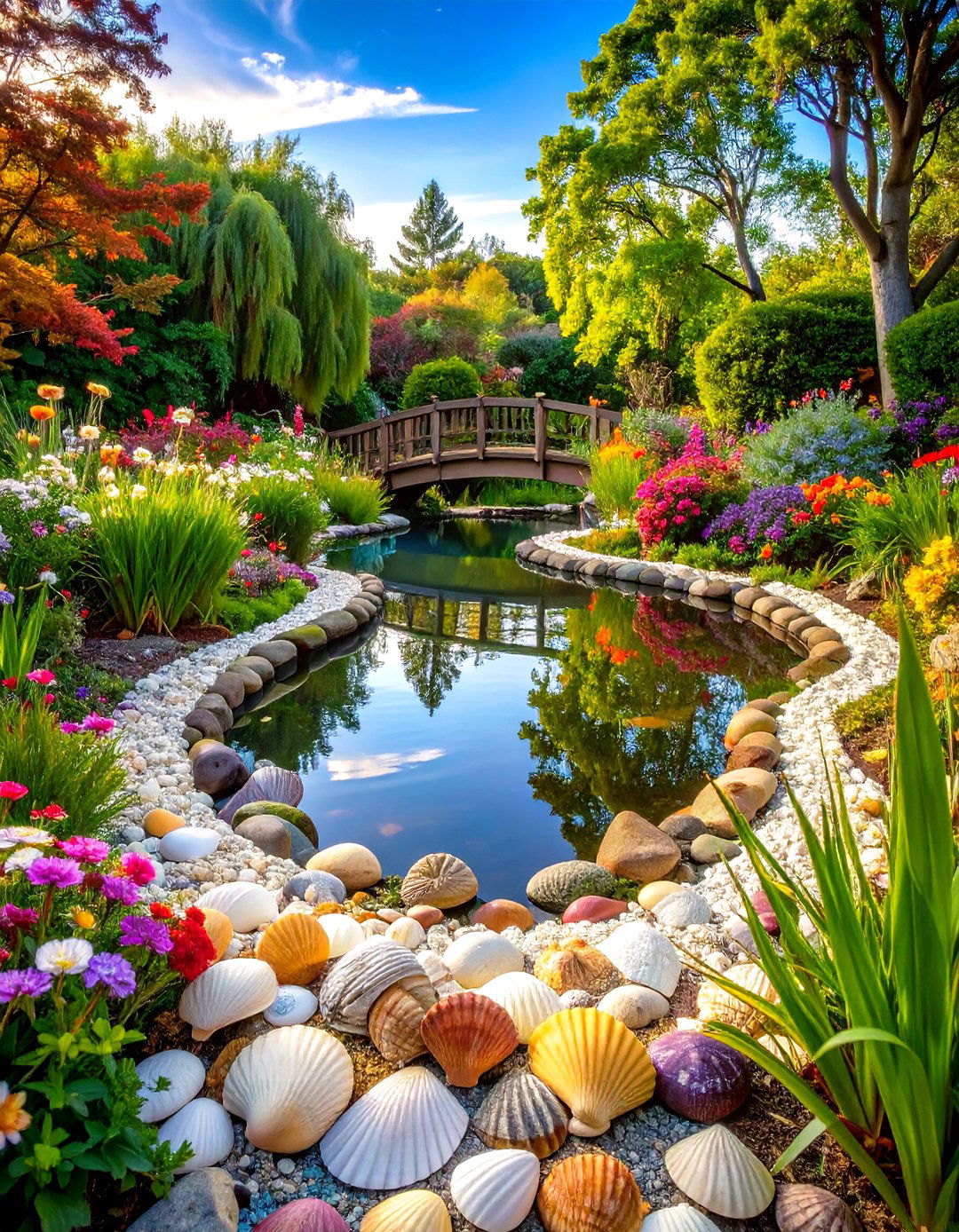
Create a beach-inspired pond edging using carefully arranged seashells that bring coastal charm and unique textures to inland water features. This pond edging approach uses various shell types like scallops, clams, and oysters arranged in naturalistic patterns that emphasize the shells' diverse shapes, colors, and sizes. The shells can be set in sand, gravel, or mortar to create different visual effects while providing practical benefits like excellent drainage and natural pest deterrence. This approach works well with coastal gardens, tropical landscapes, or any design seeking unique character. The shells' natural calcium content can benefit pond water chemistry while creating visual interest through their varied textures and colors. This edging style requires careful sourcing from sustainable suppliers and periodic maintenance to replace weathered shells, but provides immediate conversation value and distinctive aesthetic appeal that sets the pond apart from conventional designs.
14. Rope Wrapped Pond Edging
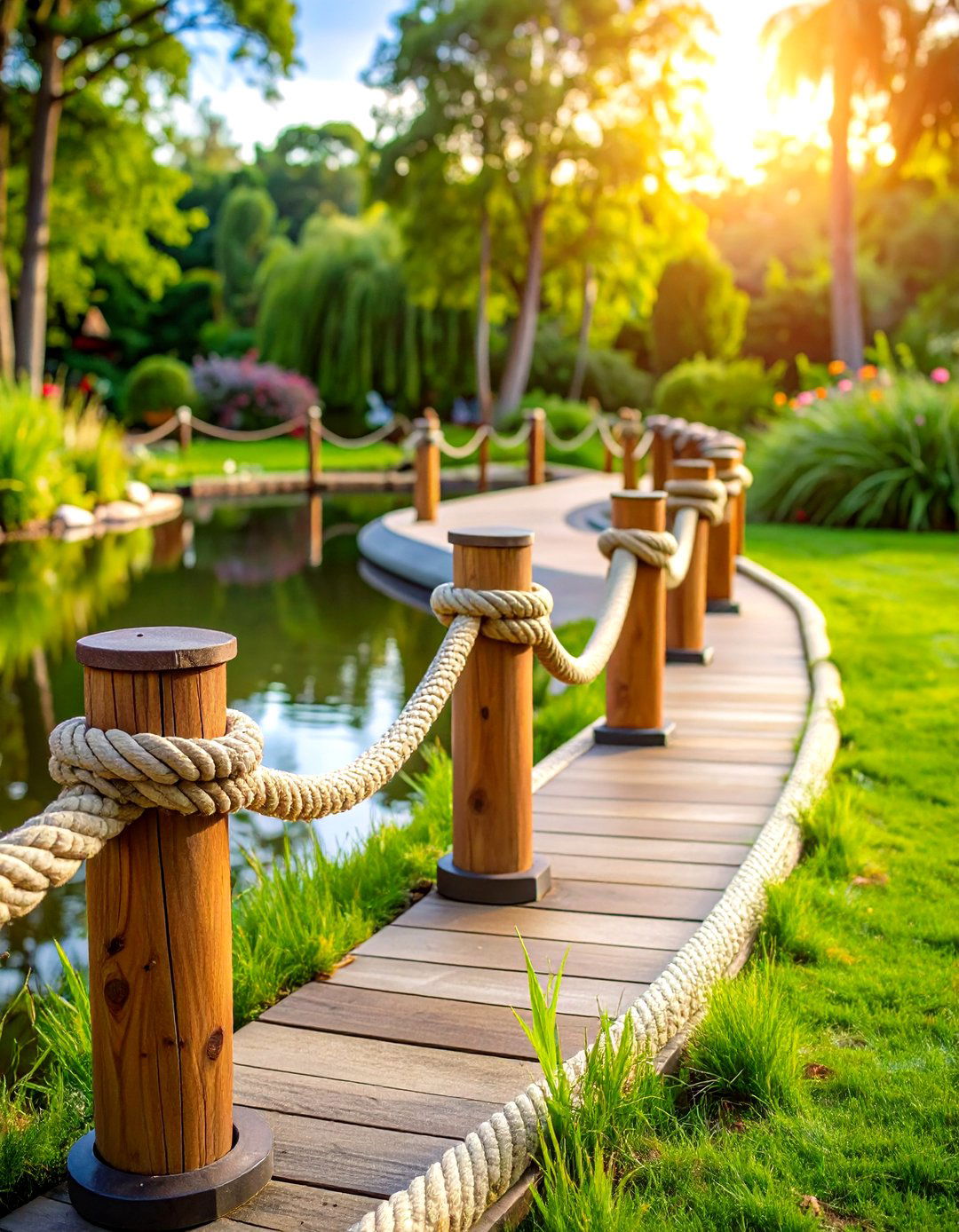
Craft a nautical-inspired pond edging using thick marine rope wrapped around supporting posts or structures to create flexible, weather-resistant boundaries with coastal appeal. This pond edging approach uses natural or synthetic rope materials arranged in traditional maritime patterns that emphasize texture and organic curves. The rope can be wrapped around wooden posts, metal stakes, or concrete supports to create continuous borders that follow the pond's natural contours. This approach works well with coastal gardens, casual landscapes, or any design seeking relaxed character. The rope's flexibility allows for easy seasonal adjustments or modifications while providing practical benefits like wildlife safety and storm resistance. This edging style requires periodic replacement as the rope naturally weathers but provides immediate character and opportunities for creative integration with other landscape elements like pergolas, boat docks, or beach-themed decorations.
15. Granite Block Pond Edging
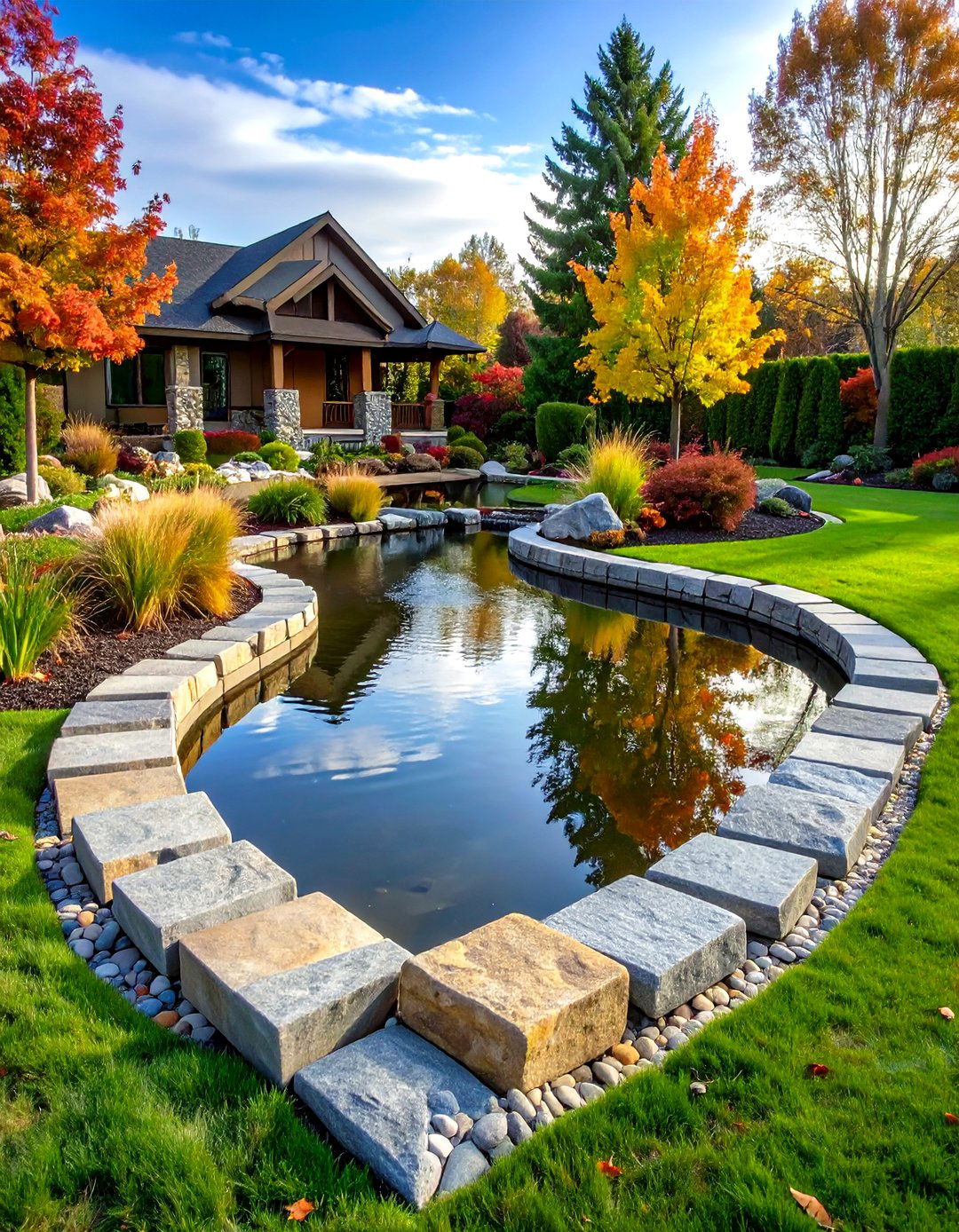
Construct a precise pond edging using cut granite blocks arranged in geometric patterns that emphasize the stone's durability and sophisticated appearance. This pond edging approach uses high-quality granite cut into uniform blocks or custom shapes, creating strong architectural statements that complement both traditional and contemporary designs. The granite's natural strength and weather resistance provide excellent longevity while offering practical benefits like built-in seating and equipment concealment. This approach works particularly well with formal pond designs, creating clean lines that emphasize water features and complement surrounding hardscape elements. The granite blocks can be arranged in various patterns like running bond, stack bond, or custom configurations to create different visual effects. This edging style requires professional installation and represents a significant investment but rewards with generations of maintenance-free beauty and increased property value.
16. Willow Branch Pond Edging
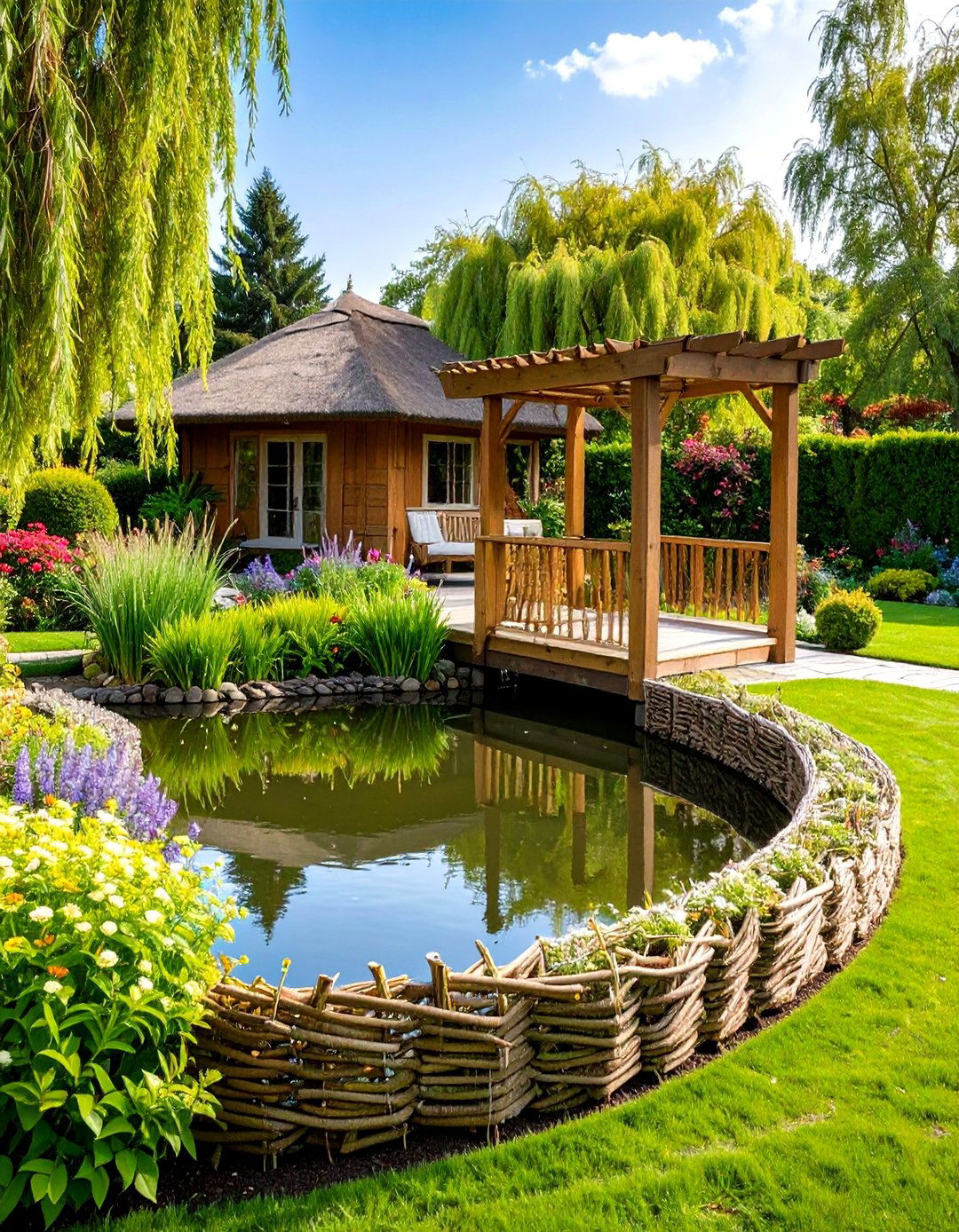
Create a living pond edging using flexible willow branches woven into natural fencing that provides both boundaries and habitat while maintaining organic aesthetics. This pond edging approach uses live willow shoots or harvested branches arranged in traditional basketry patterns that emphasize natural curves and sustainable materials. The willow can be woven around supporting posts or stakes to create continuous borders that follow the pond's natural contours while providing practical benefits like wildlife habitat and seasonal interest. This approach works well with cottage gardens, wildlife ponds, or any design seeking eco-friendly character. The willow's natural flexibility allows for easy seasonal adjustments while providing habitat for beneficial insects and birds. This edging style requires periodic maintenance to replace weathered branches but provides immediate character and opportunities for creative integration with other sustainable gardening practices.
17. Terracotta Pot Pond Edging
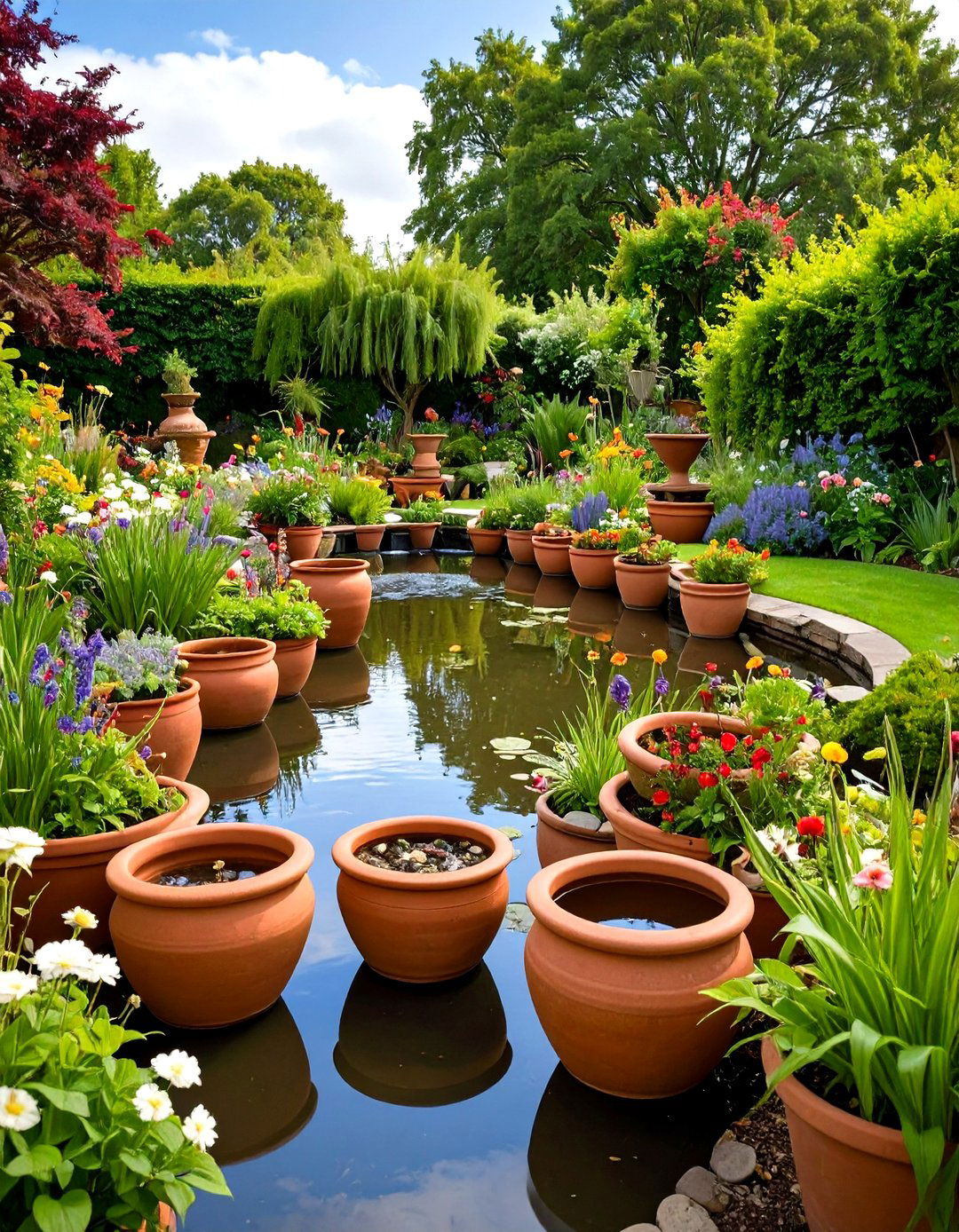
Design a Mediterranean-inspired pond edging using terracotta pots partially buried to create planters that provide both boundaries and opportunities for seasonal displays. This pond edging approach uses various sized clay pots arranged in naturalistic groupings that emphasize the terracotta's warm colors and traditional craftsmanship. The pots can be planted with herbs, succulents, or seasonal flowers to create dynamic displays that change throughout the year. This approach works well with Mediterranean gardens, courtyard designs, or any landscape seeking rustic charm. The terracotta's natural porosity provides excellent drainage while creating visual interest through varied sizes and shapes. This edging style allows for easy seasonal updates and modifications while providing practical benefits like moveable planters and frost protection for tender plants. The pots can be arranged in formal or informal patterns to create different visual effects.
18. Limestone Carved Pond Edging
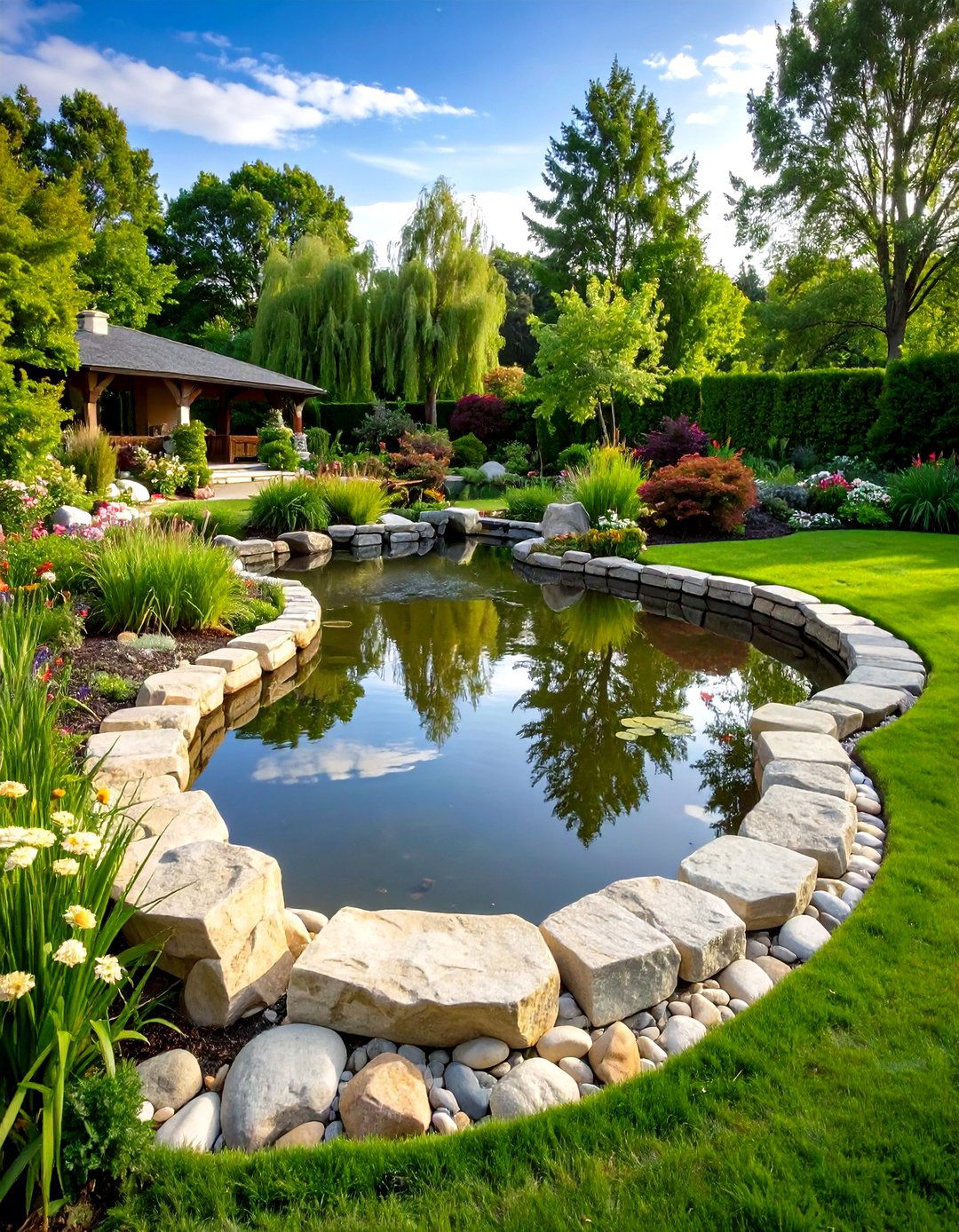
Establish an elegant pond edging using carved limestone pieces that create sophisticated architectural details while emphasizing natural stone beauty. This pond edging approach uses high-quality limestone cut and shaped into custom profiles that create formal boundaries with classical appeal. The limestone's natural cream and gray tones complement water features while providing practical benefits like excellent weather resistance and timeless aesthetics. This approach works particularly well with formal gardens, classical landscapes, or any design seeking refined character. The limestone can be carved with decorative profiles, textured surfaces, or custom details to create unique visual effects. This edging style requires skilled craftsmanship and represents a premium investment but rewards with generations of maintenance-free beauty and distinctive character that enhances property values while creating sophisticated landscape statements that complement architectural features.
19. Gabion Wire Pond Edging
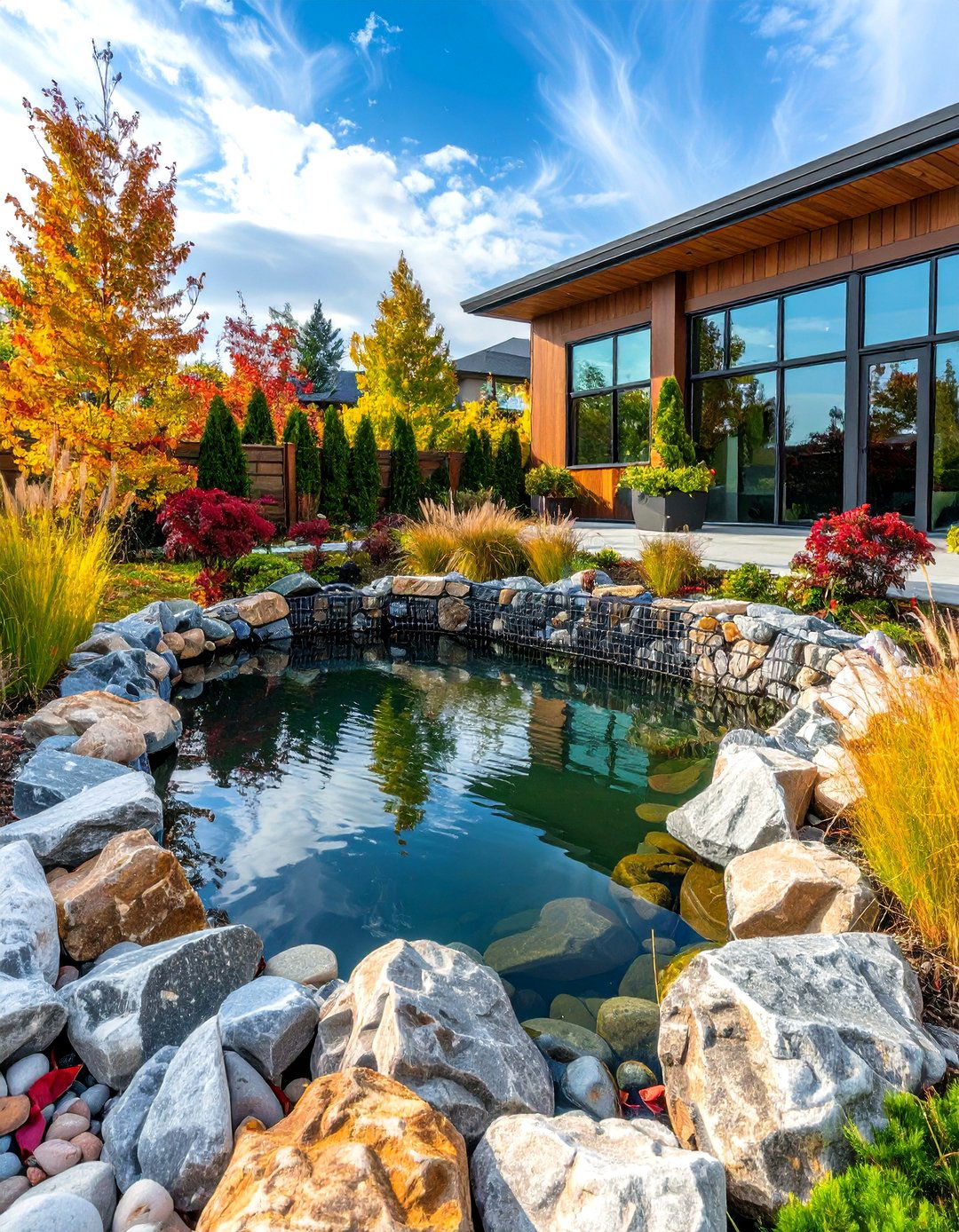
Create an industrial-modern pond edging using wire mesh cages filled with stones that provide both structural support and contemporary aesthetic appeal. This pond edging approach uses galvanized steel or stainless steel wire mesh formed into rectangular baskets filled with uniform stones or varied aggregates. The gabion structure creates strong retaining walls while emphasizing the contrast between industrial materials and natural stone fills. This approach works well with contemporary gardens, industrial landscapes, or any design seeking bold architectural statements. The wire mesh allows for creative stone arrangements while providing practical benefits like excellent drainage and easy maintenance. This edging style offers opportunities for integrated lighting, water features, or plantings within the stone fill. The gabion construction provides immediate impact and long-term durability while allowing for easy modifications or expansions as garden needs change.
20. Mixed Material Pond Edging
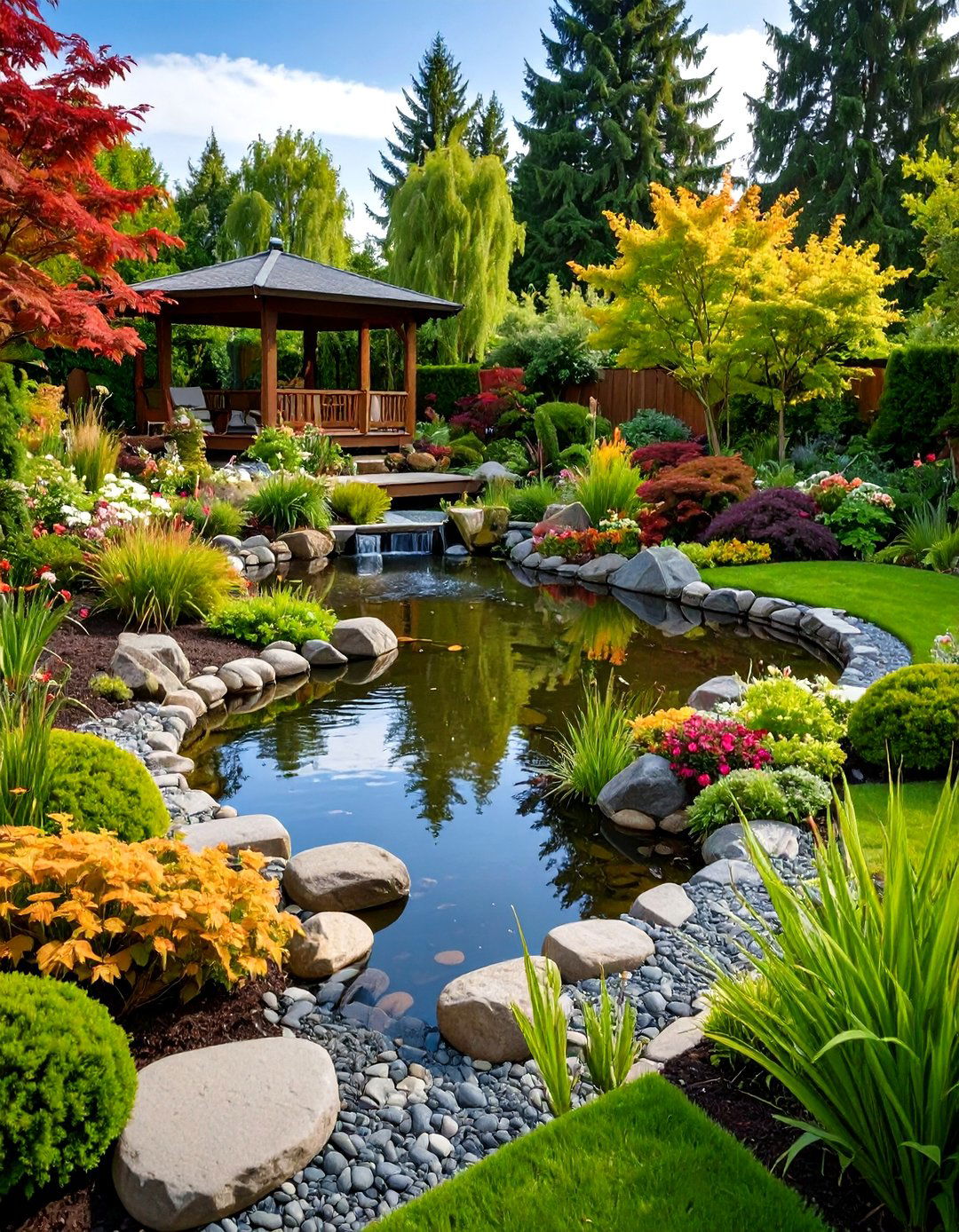
Design a sophisticated pond edging using carefully coordinated combinations of materials that create visually rich boundaries while maximizing both aesthetic appeal and practical functionality. This pond edging approach integrates multiple elements like natural stones, timber, metal, and plantings arranged in harmonious compositions that emphasize each material's unique qualities. The mixed materials create visual interest through varied textures, colors, and forms while providing practical benefits like different seating heights, integrated lighting, and seasonal planting opportunities. This approach works well with any garden style, allowing for creative expression while maintaining unified design principles. The material combinations can be arranged in formal or informal patterns to create different visual effects while providing opportunities for seasonal updates and modifications. This edging style requires careful planning and coordination but rewards with distinctive character and endless possibilities for creative landscape expression.
Conclusion:
The perfect pond edging transforms your water feature from a simple excavation into a stunning landscape centerpiece that seamlessly integrates with your garden design. From natural stone arrangements to contemporary metal frameworks, each edging approach offers unique aesthetic and functional benefits that enhance both visual appeal and practical maintenance. Whether you prefer the timeless elegance of limestone, the rustic charm of driftwood, or the modern sophistication of concrete slabs, selecting the right edging style creates lasting beauty that complements your outdoor space while providing years of enjoyment and increased property value.


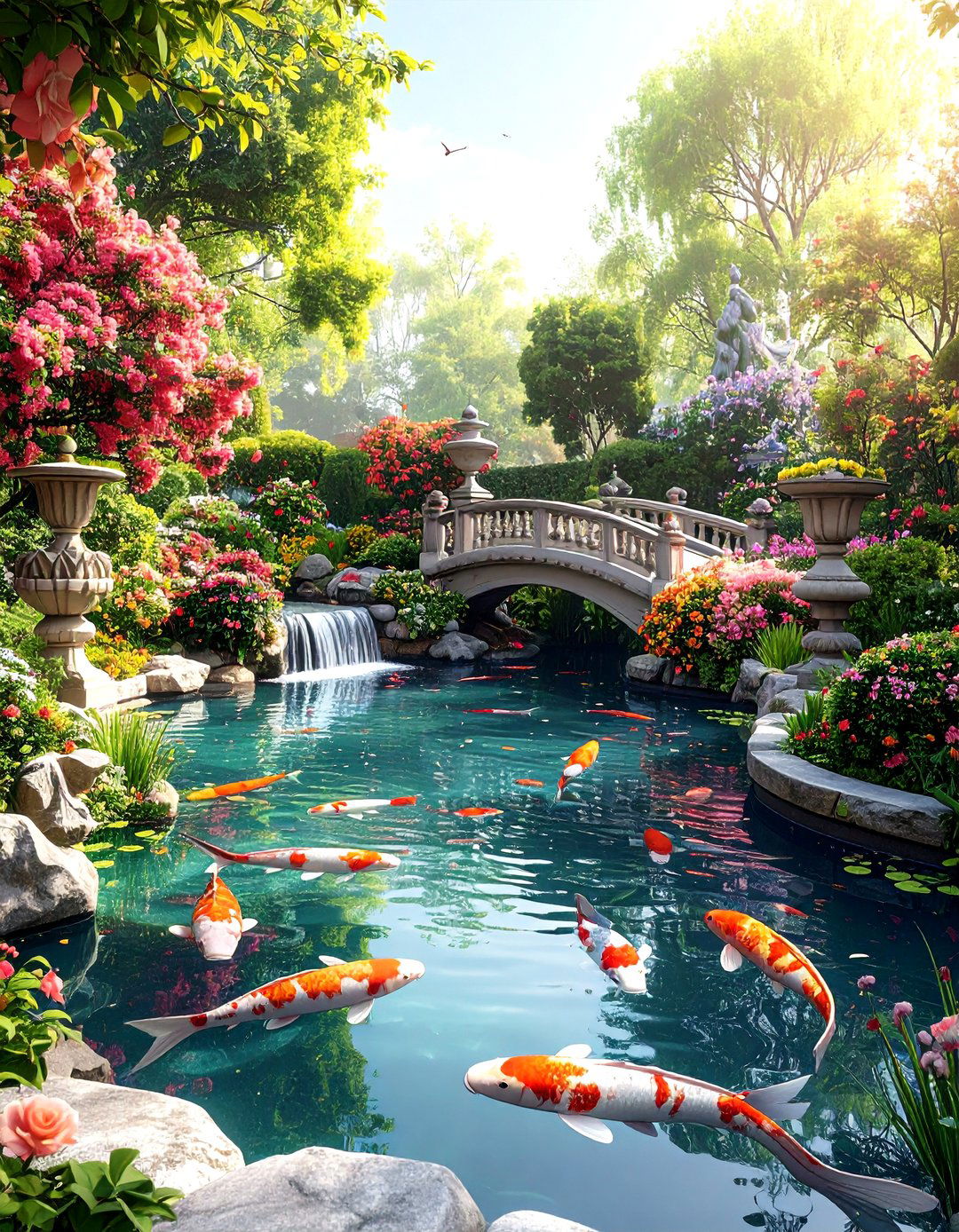
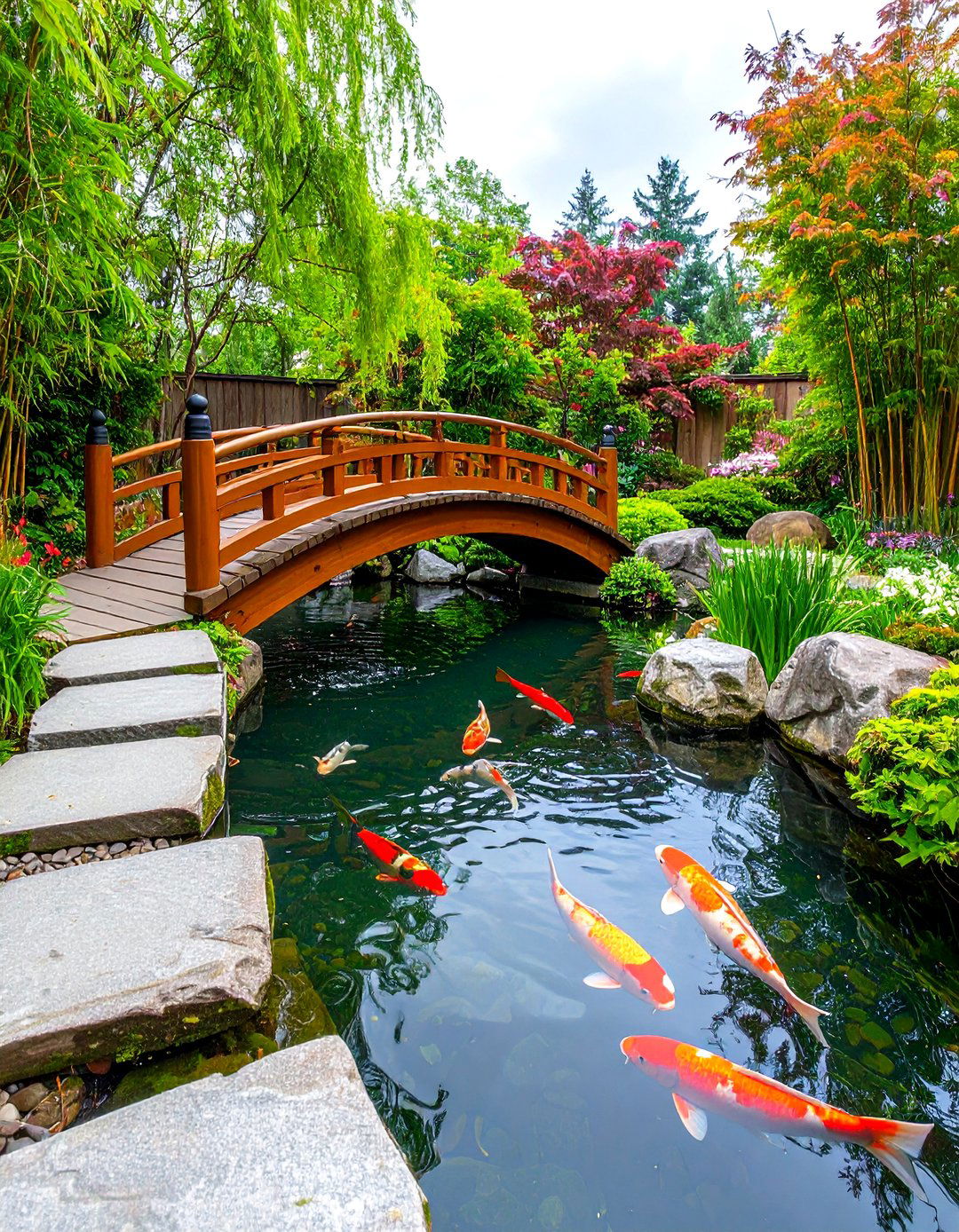

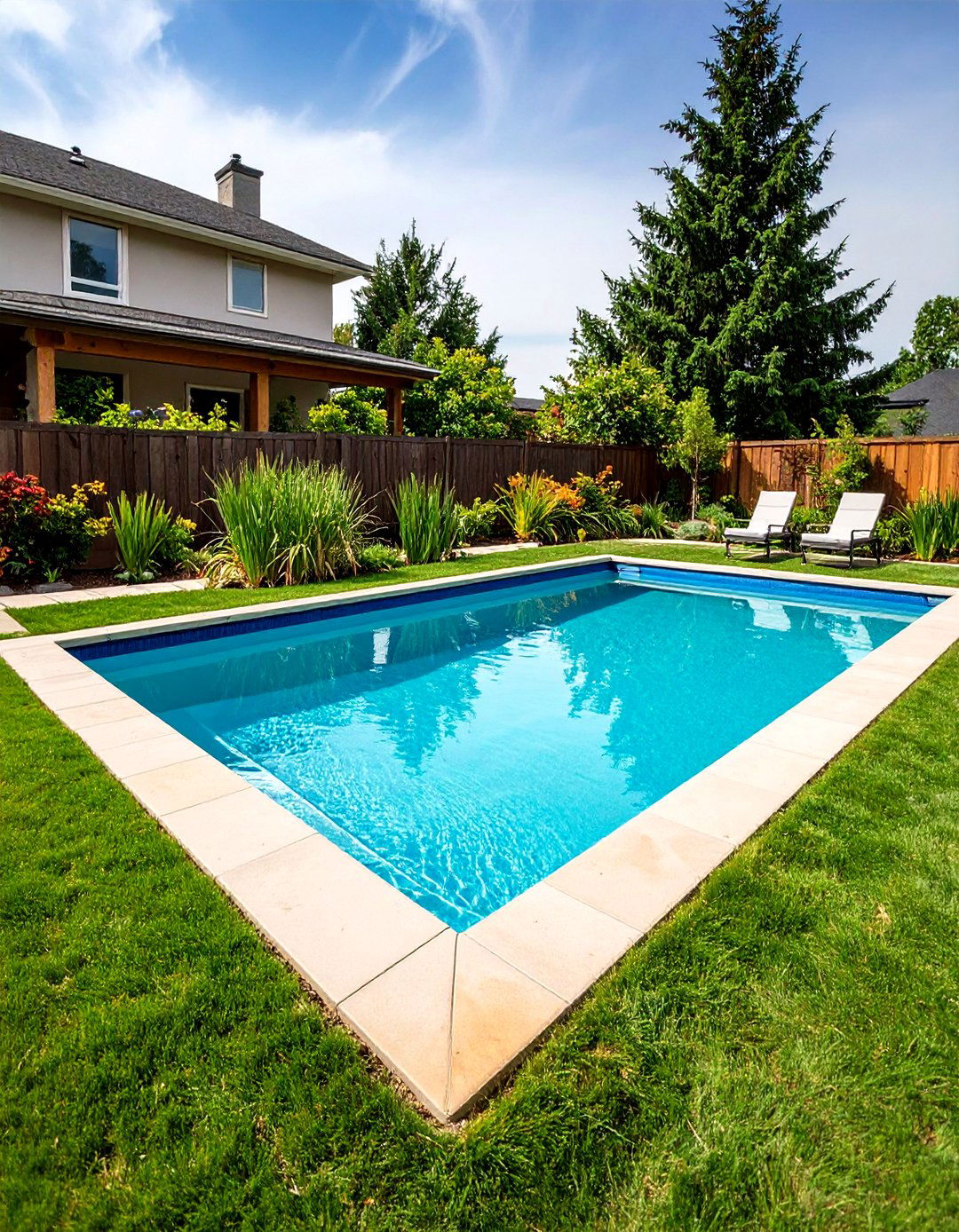
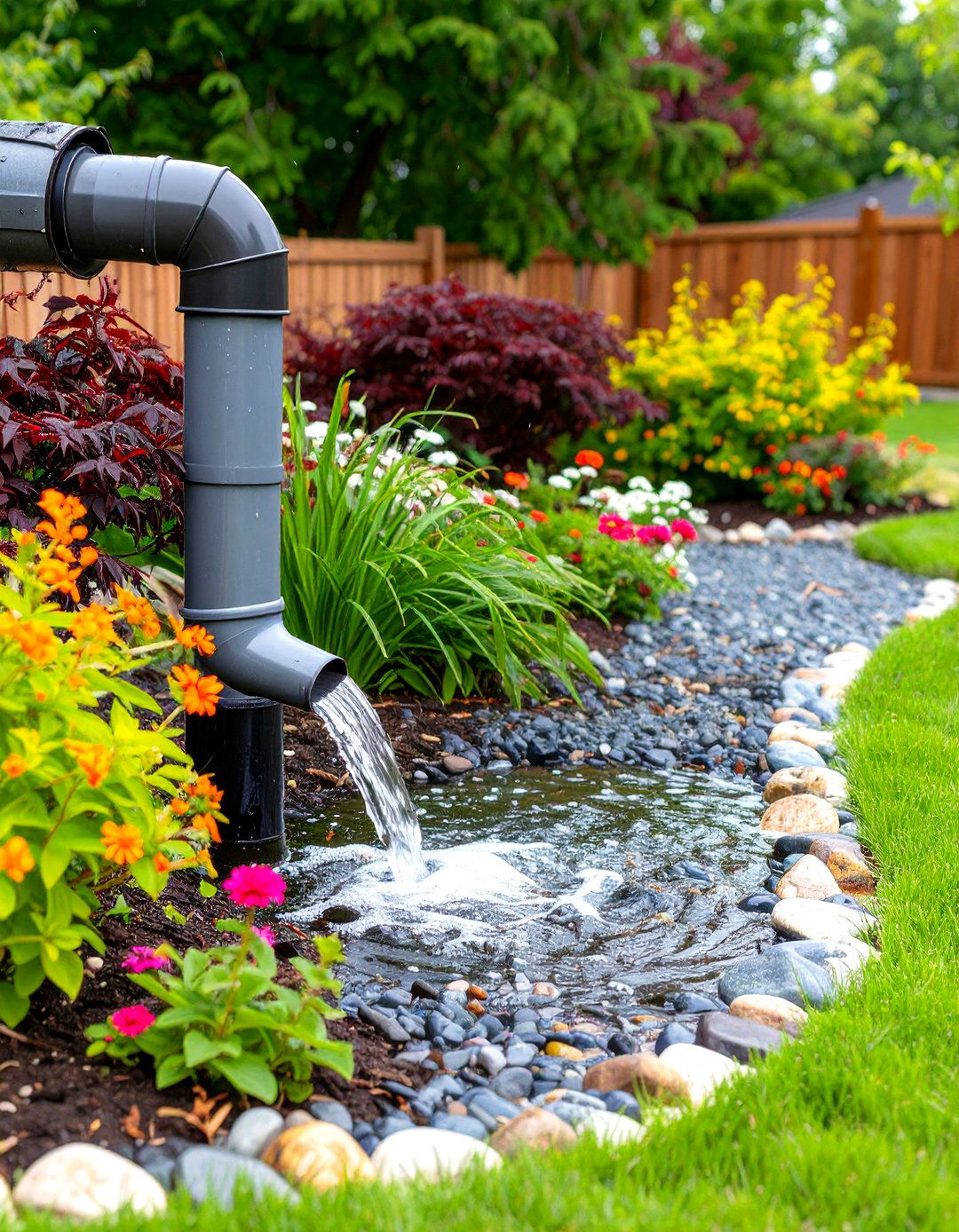

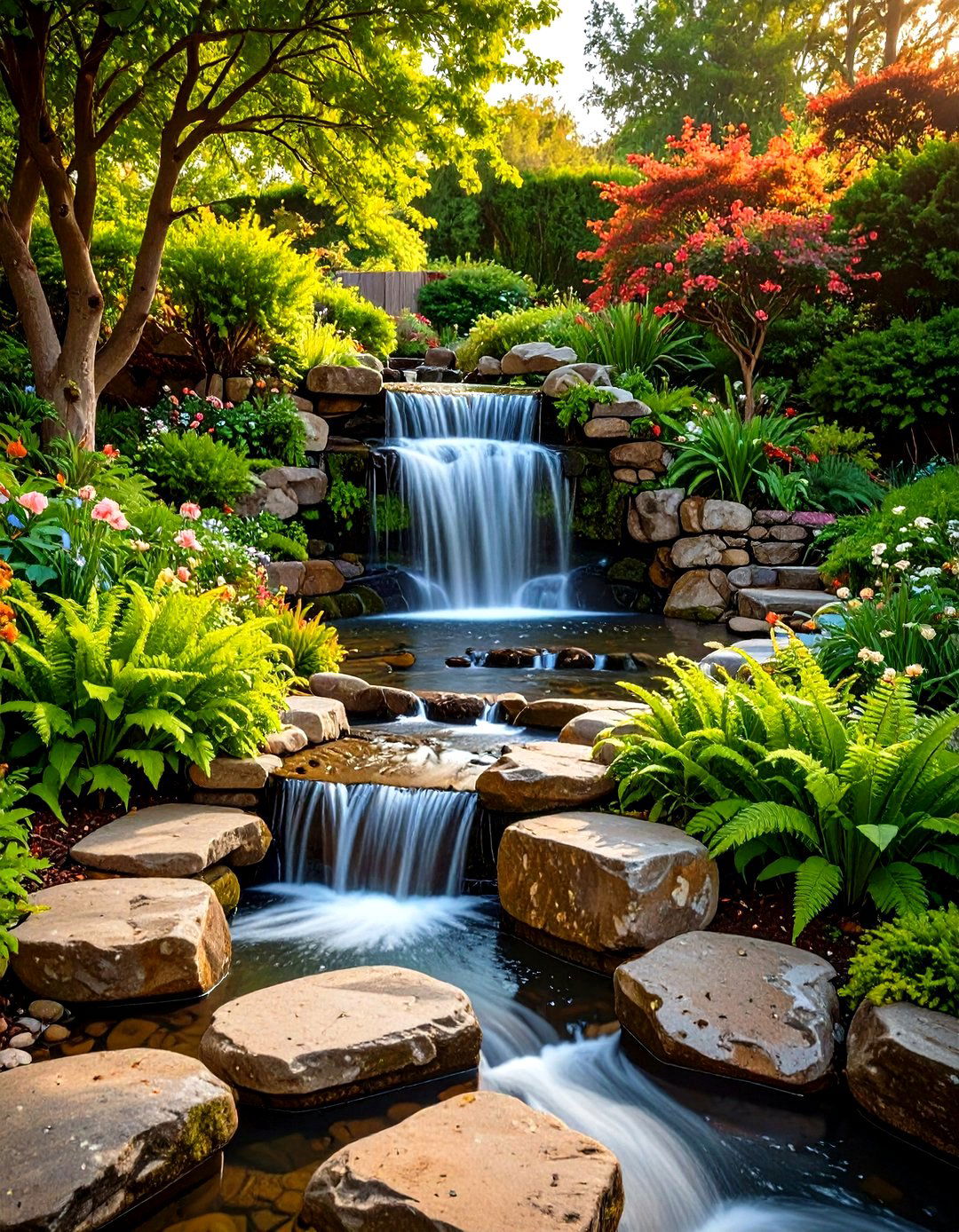
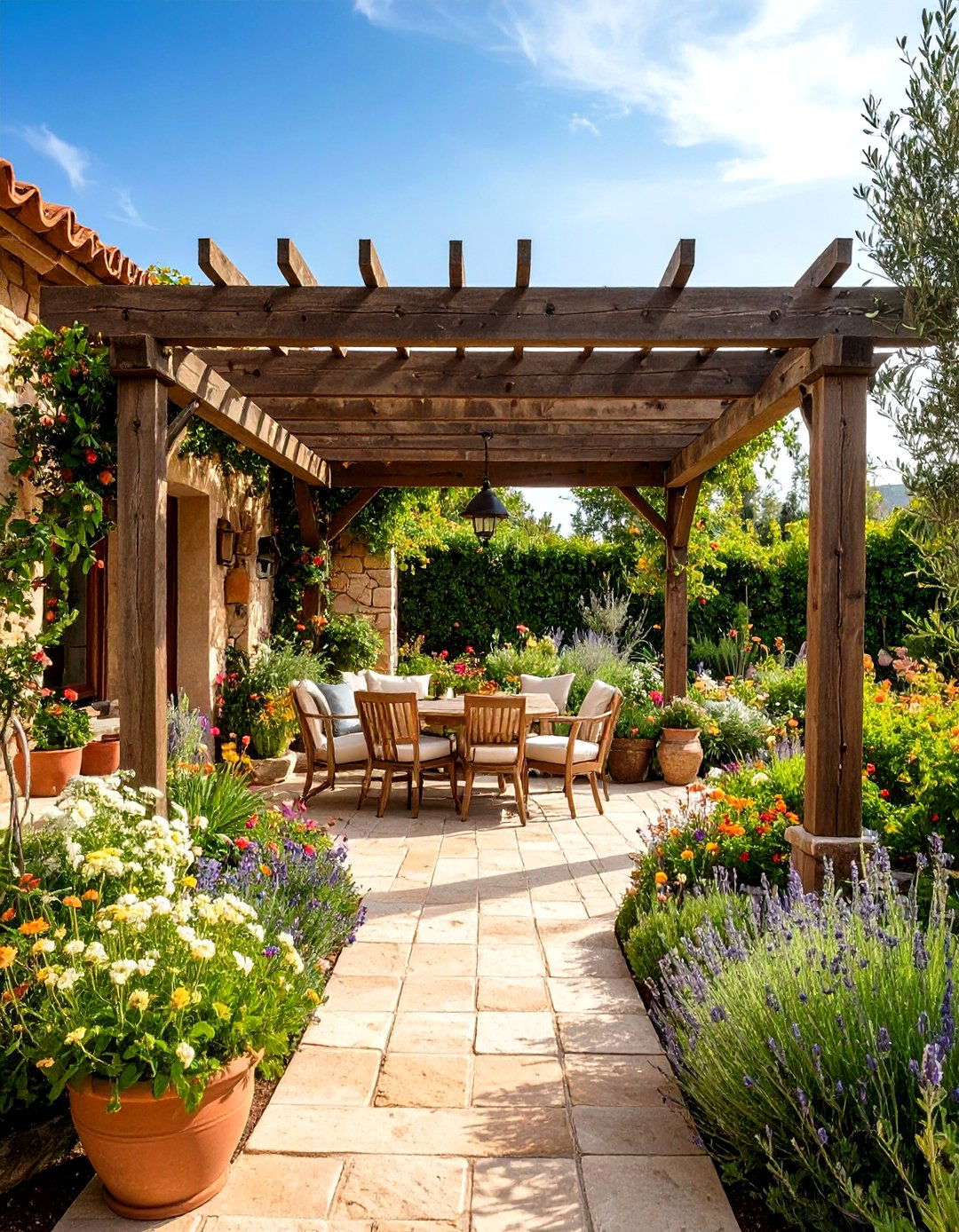
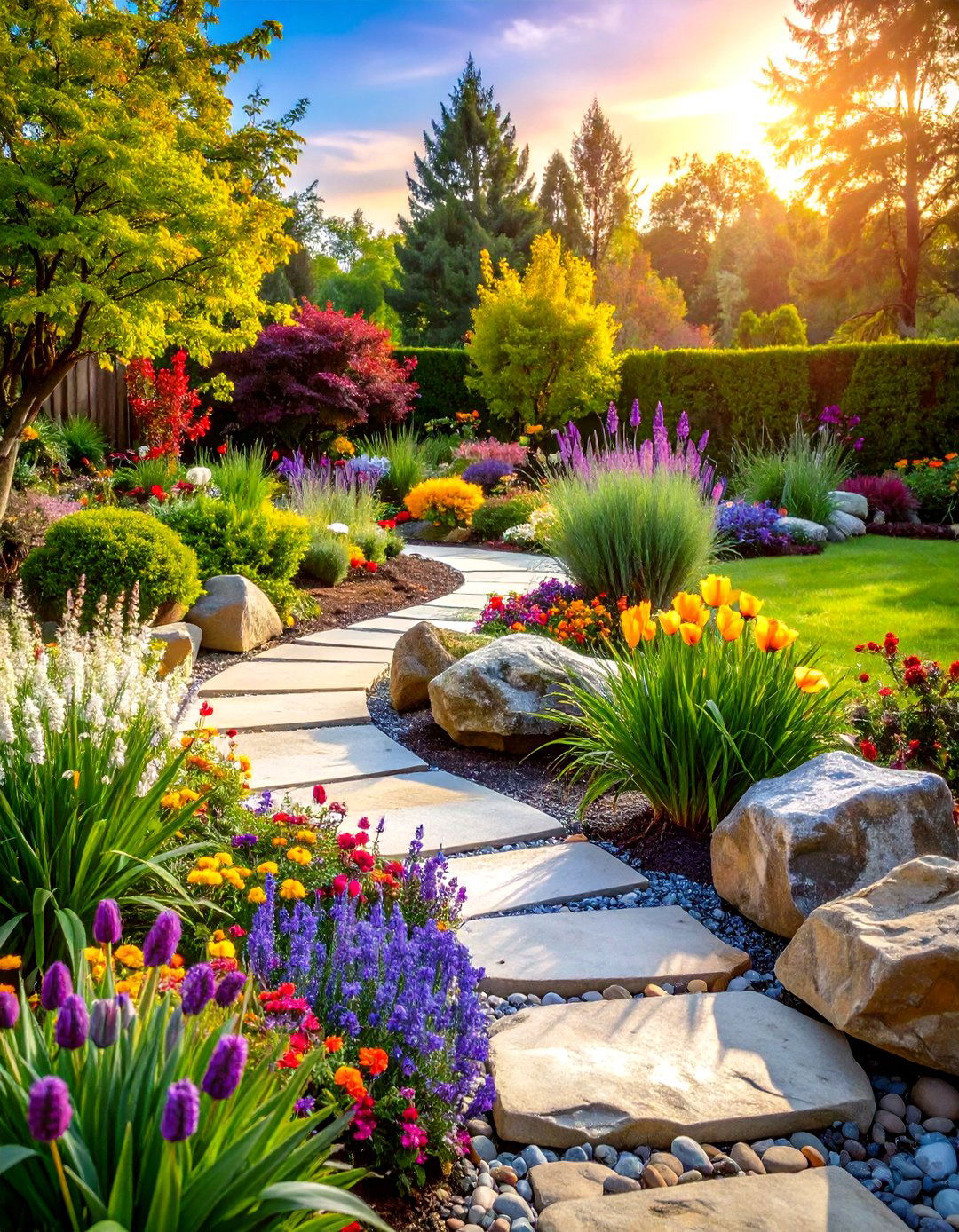
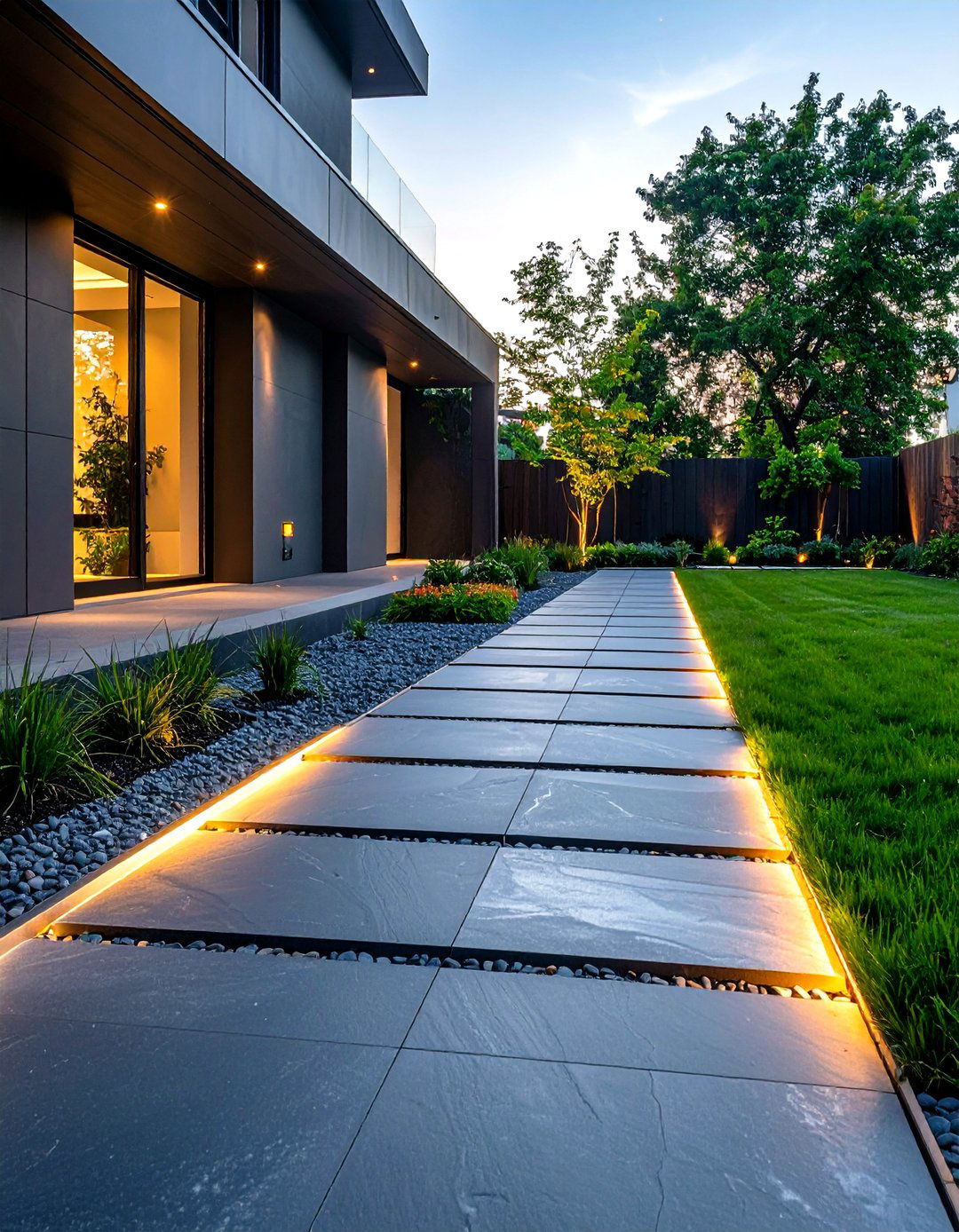
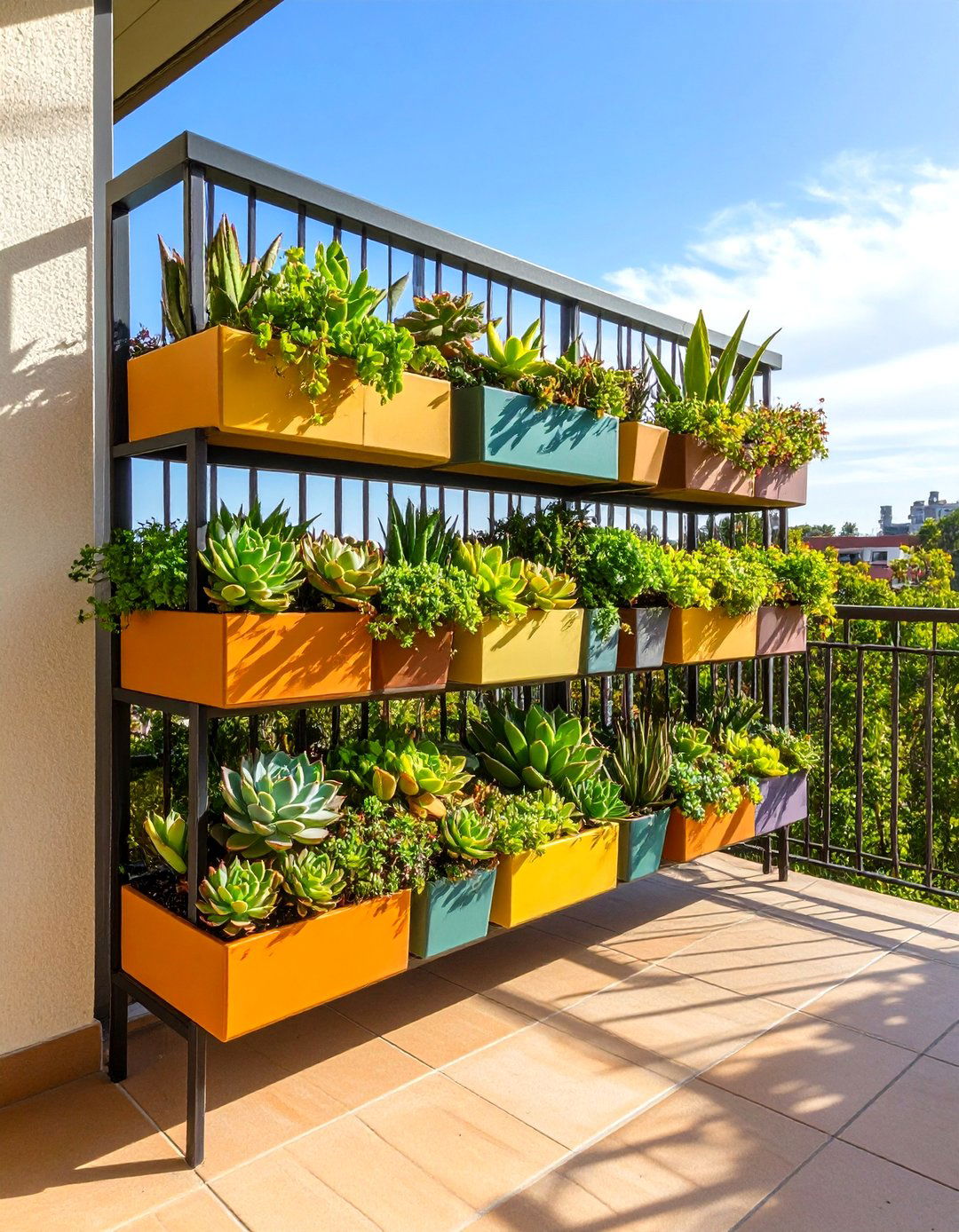
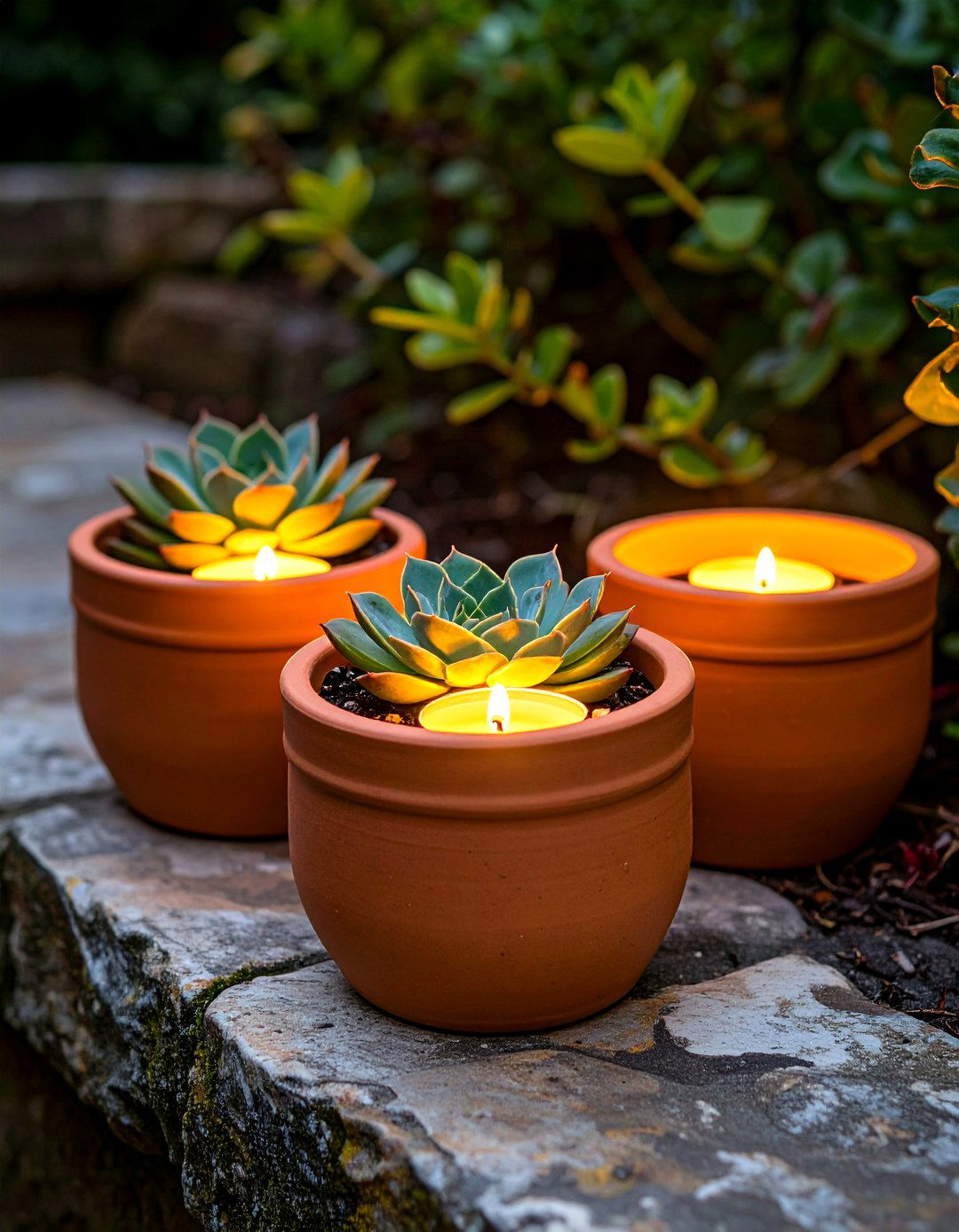
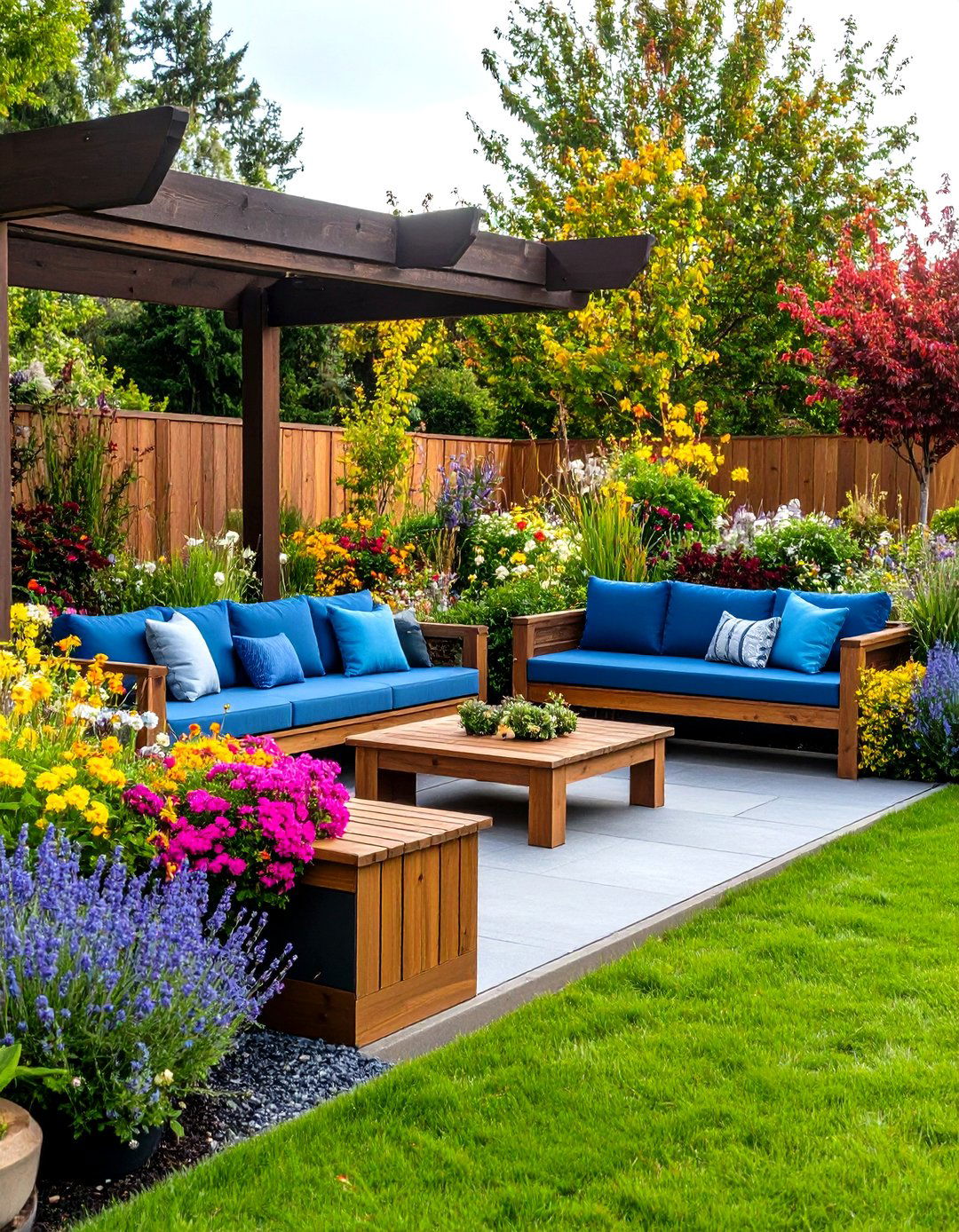
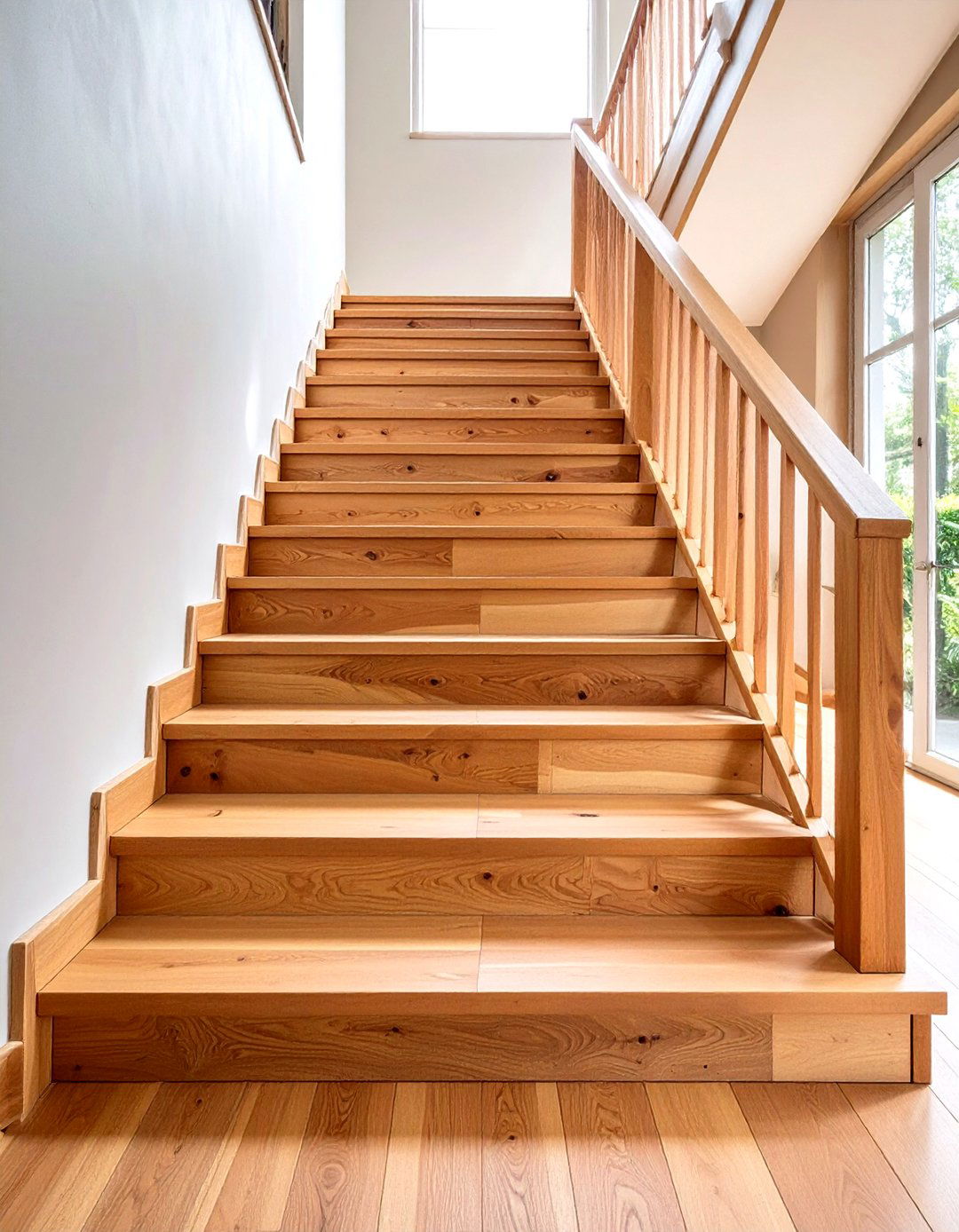
Leave a Reply